FY20 Approved Budget
TABLE OF CONTENTS |
ORGANIZATIONAL OVERVIEW |
FINANCIAL POLICIES |
OPERATING BUDGET |
CAPITAL BUDGET |
FINANCIAL SCHEDULES |
APPENDIX
"It is our goal to ensure the overarching values of our citizens are reflected in the level and quality of services provided."
-City Manager
Mayor and City Commissioners,
It is my honor and privilege to present the budget for Fiscal Year 2020 (FY20). As City Manager, I want to share my enthusiasm for the course set by the City Commission and how your leadership and vision is invigorating our organization and our community.
The City’s vision is progressive and ambitious. To achieve it, budget development and planning are key. Through our citizen focused approach and transparent process, which includes quarterly public updates, we have been able to make significant gains in reaching disconnected youth, strengthening neighborhoods, enhancing our transportation network and more.
My goal in the development of the FY20 budget is to continue providing innovative, best-in-class service effectively and efficiently, setting the stage for the City of Tallahassee to remain a national leader in municipal service. This proposed budget seeks to address your direction related to our community’s highest priorities, including Public Safety, Infrastructure Investment, Quality of Life and Impact of Poverty, and Economic Development.
With the creation of positive life-enhancing youth programs like TEMPO (Tallahassee Engaged in Meaningful Productivity for Opportunity) and equipping our fire stations with life-saving technologies such as Advanced Life Support systems, we remain steadfast in our commitment to public safety. Technology enhancements that support the collaboration and sharing of information among law enforcement agencies coupled with citizen engagement/outreach programs will continue to help us promote safe neighborhoods.
Our neighborhoods are also on track to be more walkable than ever with the goal of completing 10 sidewalk projects per year for each of the next five years with combined City, Blueprint and Community Redevelopment Agency resources. Other major infrastructure investments underway include the site selection and planning process for a Public Safety Campus and planning for our future use of the newly acquired Northwood Mall property, both of which will be developed with community input to ensure long-term positive impact.
Another long-term effort that seeks to create a positive impact is cultivating a more sustainable community. The Clean Energy Resolution is helping guide the City’s policies, planning and growth in ways that enhance our residents’ quality of life. This includes upgrading our transportation fleet with new electric buses.
One area that bridges several priority areas is connecting the unemployed or underemployed with resources, including skills training. These efforts address issues related to poverty, improve quality of life and stimulate the economy. Continued support of human services programs will also help as we work toward ensuring Tallahassee continues to be recognized as a vibrant and livable city. Leveraging Tallahassee’s position as Florida’s Capital City and a hub of higher learning and technological innovation will be key to furthering employment and economic opportunities.
As we work to meet the needs of the community, the City strives to uphold our updated Mission, Vision and Values.
Mission: To be the national leader in the delivery of public service.
Vision: A creative capital city that supports a strong community with vibrant neighborhoods; an
innovative economic and educational hub serving diverse and passionate people, protecting our natural resources and preserving our unique character.
Values:
- Honor public trust through ethical behavior.
- Provide exceptional citizen service.
- Lead with integrity at every level.
- Collaborate to reach common goals.
- Invest in employee excellence.
- Promote equity and celebrate diversity.
Important Features of the Budget
The proposed FY20 Operating Budget totals $727.08 million across 14 funds, including the General Fund and Utility Funds. Its development was led by Commission guidance regarding a variety of assumptions, including holding the millage rate at 4.1000 mills, maintaining operating costs at 2019 levels, committing to building 10 new sidewalks each year for the next five years through the Capital Improvement Program (CIP) and providing a three percent pay increase for employees not covered by an existing collective bargaining agreement.
In addition to these assumptions, the City of Tallahassee continually monitors the value and service received by residents by conducting the annual Municipal Cost Comparison (MCC). The MCC evaluates what residents in Tallahassee pay in taxes and fees for essential city services relative to 11 other peer cities in Florida. The FY19 MCC showed that Tallahassee continues to be the lowest cost provider in our peer group and has the lowest millage rate, despite having the second-largest service area and a large proportion of non-taxable property (government buildings, universities, churches, etc.).
Similarly, the Small Business/Commercial Cost Comparison for FY19, which shows the City’s costs for services for our local businesses, demonstrates a business-friendly environment in Tallahassee, which was strengthened by the Commission’s decision in July 2016 to repeal the business license tax. The City will continue to monitor costs and work to keep them competitive for the community while maintaining quality service.
Based on reviews of management practices, financial results and reserves, the City continues to receive positive bond ratings, including AA bond ratings for its capital (governmental), consolidated utility system (water, sewer and stormwater) and energy system (electric and gas) bonds.
As our mission statement reflects, however, it is service, not only cost, that defines the value of our organization. Our day-in/day-out service delivery, from Police and Fire to Fleet and Human Resources, are second to none. Electric, water, wastewater, roads, sidewalks and countless other infrastructure needs are all provided reliably by the City 24/7/365.
By any measure, the City provides exceptional services, but to understand the dedication of this organization to our community, it is important to understand the diverse and passionate people that we employ. This is their home, and their contributions to Tallahassee go far beyond their work schedule. Thus, the City engages in many philanthropic activities, some of which are outlined below. To encourage volunteerism, the City provides volunteer service leave. Each month, if an employee donates two hours of their own leave (personal or compensatory leave), they can also use four hours of volunteer leave from the City, allowing for six hours of volunteer time.
United Way
With a long history of providing support, employees came together once again pledging personal commitments to the United Way to the tune of $101,249.71 in donations, placing the City among the top five major contributors and earning the 2018 Cornerstone Award.
Relay For Life
These worldwide events raise funds for the American Cancer Society. At the 2019 Leon-Havana event, the City of Tallahassee raised more than any other group, with a total of $17,847, while contributing over 400 volunteer hours. Over the last five years, City staff has raised over $95,000 for this effort.
Habitat for Humanity
In 2017, the City become an individual home sponsor with Habitat for Humanity. Since then, the City has provided $520,000 in funding, and City employees have volunteered more than 1,335 hours of their own time to build eight affordable homes for local families.
Fill the Boot
Muscular dystrophy is a group of diseases that cause progressive weakness and loss of muscle mass. There's currently no cure for any form of muscular dystrophy. To aid in finding a cure and to raise awareness, the Fire Department conducts a “Fill the Boot” fundraiser each year. Since 2008, TFD has raised over $220,000 for the Muscular Dystrophy Association.
Stuff the Bus
One in five people in the Big Bend are at risk of not having enough to eat. Each February, StarMetro hosts Stuff the Bus, a food drive, to benefit America’s Second Harvest of the Big Bend. Thanks to generous community donations, this year’s effort yielded 5,714 pounds of non-perishable food. The donated food, combined with cash donations from StarMetro’s partners, will provide more than 4,762 meals for residents in need.
Hurricane Michael Relief Efforts
After working 24/7 on local recovery efforts after Hurricane Michael, City employees immediately began finding ways to serve our neighbors to the west. The Tallahassee Police Department partnered with the Florida Chiefs Association to help first responders by collecting basic hygiene products, underwear, towels and washcloths for distribution to those in the field who were unable to get home or find items while on duty. Underground Utilities & Public Infrastructure spearheaded a donation effort that provided thousands of items, including food, cleaning supplies, clothing, toiletries and pet supplies, to residents in Gulf, Calhoun and Jackson counties. This was in addition to the many mutual aid crews the City deployed to assist throughout the Panhandle.
Blood Drives
Blood drives are routinely held at City Hall, the Gemini Building and the Water Department. In the past year, City employees donated a total of 240 pints, or 30 gallons, to help to meet the needs of local hospitals and surgical centers.
Employee Giving
Last year, City employees donated over $125,000 to community organizations through payroll deduction and have contributed $434,000 over the past three years.
Knowing the deep involvement of our staff in their neighborhoods, community and faith-based organizations, as well as their willingness to turn out for the fundraising and volunteer opportunities provided by the City, I am confident that their true contribution is many times over what has been shared here.
In Conclusion
The FY20 Operating Budget, developed under the leadership of the City Commission, demonstrates the City’s commitment to financial responsibility while cultivating a flourishing community, a place where passion and purpose combine for the betterment of all. With vibrant neighborhoods, diverse people and robust natural resources, we can leverage our unique character as an innovative economic and educational hub to further strengthen the community. The task in front of us will be accomplished through the hard work, innovation and integrity of our City employees, a team I am proud to lead. Thanks to servant leadership, responsible management and an efficient use of resources, the City will continue to be a national leader in the delivery of public services.
Sincerely,

Reese Goad
City Manager
1.1 Organizational Chart
Return to Top
 Download the Organizational Chart
Download the Organizational Chart
1.2 Mission
Return to Top
The City of Tallahassee, through workshops, surveys, commission retreats and more, has developed the following vision, mission, critical success factors, values and priorities. These are used as the basis for the performance measurement process that each department has implemented. Over the coming year, the measures will be reviewed and evaluated to ensure they are aligned with the City of Tallahassee’s vision, mission, critical success factors, values and priorities.
Mission:
To be the national leader in the delivery of public service.
Vision:
A creative capital city that supports a strong community with vibrant neighborhoods; an innovative economic and educational hub serving a diverse and passionate people, protecting our natural resources and preserving our unique character.
Values:
- Honor public trust through ethical behavior.
- Provide exceptional citizen service.
- Lead with integrity at every level.
- Collaborate to reach common goals.
- Invest in employee excellence.
- Promote equity and celebrate diversity.
1.3 Employment by Sector within Tallahassee
Return to Top
Non-Agricultural Employment by Industry, Tallahassee MSA (2018)

Source: U.S. Department of Labor, Bureau of Labor Statistics, Current Employment Statistics Program.
Prepared by: Florida Department of Economic Opportunity, Bureau of Labor Market Statistics.
Tallahassee MSA Non-Agricultural Employment by Industry, 2013-2018
Trend: Private sector job growth in 2018 was led by gains in Professional & Business Services (1,100 jobs) and Education & Health Services (800 jobs).
| Industry Type |
2014 |
2015 |
2016 |
2017 |
2018 |
Avg. Ann. Rate Change 2013-2018 |
| Mining, Logging & Construction |
6,300 |
6,700 |
7,500 |
7,700 |
8,400 |
6.1% |
| Manufacturing |
2,900 |
3,100 |
3,100 |
3,200 |
3,200 |
0.6% |
| Trade, Transportation and Util. |
23,700 |
24,200 |
24,400 |
24,300 |
24,800 |
1.7% |
| Information |
3,900 |
3,500 |
3,200 |
3,400 |
3,100 |
-1.8% |
| Financial Activities |
7,100 |
7,000 |
7,500 |
7,800 |
7,900 |
1.6% |
| Professional & Business Services |
19,000 |
19,000 |
20,300 |
20,300 |
21,400 |
2.9% |
| Education & Health Services |
20,600 |
21,100 |
21,800 |
23,200 |
24,000 |
3.9% |
| Leisure & Hospitality |
17,900 |
18,700 |
19,600 |
19,800 |
20,400 |
3.4% |
| Other Services & Not Classified |
9,000 |
8,900 |
9,400 |
8,900 |
9,600 |
1.7% |
| State Government |
43,900 |
43,500 |
43,200 |
44,000 |
44,800 |
0.9% |
| Local Government |
15,200 |
15,200 |
15,300 |
15,000 |
14,700 |
-1.2% |
| Federal Government |
1,900 |
1,900 |
2,000 |
2,100 |
2,100 |
1.0% |
| Total |
163,300 |
172,800 |
171,400 |
179,700 |
184,400 |
1.9% |
View Tallahassee MSA Non-Agricultural Employment by Industry, 2013-2018
1.4 Population
Return to Top
1.5 Interesting Tallahassee Facts
Return to Top
Tallahassee became the capital of Florida in 1824. At the time, Pensacola and St. Augustine were the two population centers of the then Florida territory and had taken turns as the capital. Soon, legislators grew weary of the long trip by horseback between the two cities. Tallahassee was chosen as the ideal midpoint, with some reporting that “A more beautiful country can scarcely be managed…”, a reputation that stands to this day.
The City is also home to several institutions of higher learning. Florida Agricultural and Mechanical University (FAMU) was ranked as the No. 2 public historically Black college and university (HBCU). It’s the only HBCU in the Florida University system.
Florida State University (FSU) was recently ranked No. 18 among national public universities by the U.S. News & World Report. It serves as the home to the National High Magnetic Field Laboratory, the world’s largest and most powerful magnetic laboratory. The equipment there can generate a magnetic field that is one million times stronger than the magnetic field of the earth.
The Lab resides within Innovation Park, a designated space for research and development. Over 30 organizations, from manufacturing companies to research facilities, all foster the growth of high-wage jobs for the City’s economy.
In December 2017, a 20-MW solar farm located at the Tallahassee International Airport was connected to the city’s power grid. The 234,000-panel solar farm is spread out over 120 acres. It produces enough energy to light 3,400 homes. This farm reduces the city’s carbon dioxide (CO2) emissions by approximately 18,000 tons per year.
With another solar farm planned, the City progresses toward its 2050 goal of 100% renewable energy. Along the way the City will maintain a fleet of 100% electric vehicles by 2035.
- Tallahassee was named the #9 South’s Best City as part of the magazine’s third annual South’s Best Awards and is the only city in Florida to be recognized in that category
- A Top 100 Best Places to Live by Livability in 2019
- 2012 the City’s utility system was awarded as the “#1 Public Utility in America” by the national Public Power Association
- The National Arbor Tree Foundation awarded Tallahassee the title of “Tree City USA” in 1992
- The National Civic League awarded Tallahassee the “All American City Award” in 1999
- 2019 Public Gas System Achievement Award – the highest award given by the American Public Gas Association
1.6 Millage Rate
Return to Top
WHAT IS A MILLAGE RATE?
The millage rate (also known as property tax) is the amount per $1,000 used to calculate taxes on property. Millage rates are most often found in personal property taxes, where the expressed millage rate is multiplied by the total taxable value of the property to arrive at the property taxes due.
The Ad Valorem Millage for FY18 for the City of Tallahassee remained at 4.1000 Mills. It was also set at 1.0000 Mills for the Downtown Improvement Authority (DIA). In comparison to other comparable cities such as Fort Lauderdale, Gainesville, Lakeland and West Palm Beach; Tallahassee has the lowest millage rate.
1.7 Municipal Cost Comparison
Return to Top
When measuring costs, the City compares itself to a group of eleven cities that share similar demographics, services provided, and square miles served. The Municipal Cost Comparison below contrasts what citizens pay for municipal services. The comparison includes seven categories:
- Property Taxes
- Water Utility Bills
- Sewer Utility Bills
- Electric Utility Bills
- Solid Waste Bills
- Storm Water Bills
- Fire Service Fees
Through the Commission’s leadership, employees provide quality services at a reasonable cost. Even with a large population and area to serve, the City of Tallahassee provides the lowest total municipal cost for its citizens.
Cost Comparisons with other Cities FY20
1.8 Strategic Plan
In preparation for its 200th year in 2024, the City developed a comprehensive strategic plan. It was written using citizen engagement, both in-person and online, and with direction from the City Commission. While the budget directs resources for accomplishing one year’s worth of goals and activities, this plan represents the City’s direction for the next five years.
The City’s goals and objectives to be reached by 2024 are detailed below by seven different priority areas. To read the complete 2020-2024 Strategic Plan, click here.
“We are Tallahassee” Video
Objectives & Priorities
This strategic plan sets the course for the City of Tallahassee
to achieve a specific set of priorities, goals, and objectives by
2024. It does so within the context of the community’s longterm
Comprehensive Plan and shapes fiscal policy set forth
within future annual budget documents.
City Priorities
To achieve our vision, the City Commission has identified seven priority areas to guide service efforts over the next five years.
GOAL
To advance the City of Tallahassee as a competitive, innovative, and sustainable regional economic hub.

Objective 1A:
Enhance and modernize infrastructure to enable capacity for growth.
- Percent of households in city limits with broadband internet (25 Mbps) coverage. Target: 99%
- Number of brownfield areas assessed, remediated, or redeveloped within the South Monroe corridor.
Target: 20 sites
- Number of electric vehicle (EV) charging stations installed in utility customers’ homes. Target: 500
- Miles of aging wastewater pipes upgraded annually. Target: 5.5 miles
- Complete construction of Customs Facility at Tallahassee International Airport by 2024.
- Invest $25 million through 2024 in stormwater capacity enhancements to improve water quality, and mitigate flooding, in the urban service area.
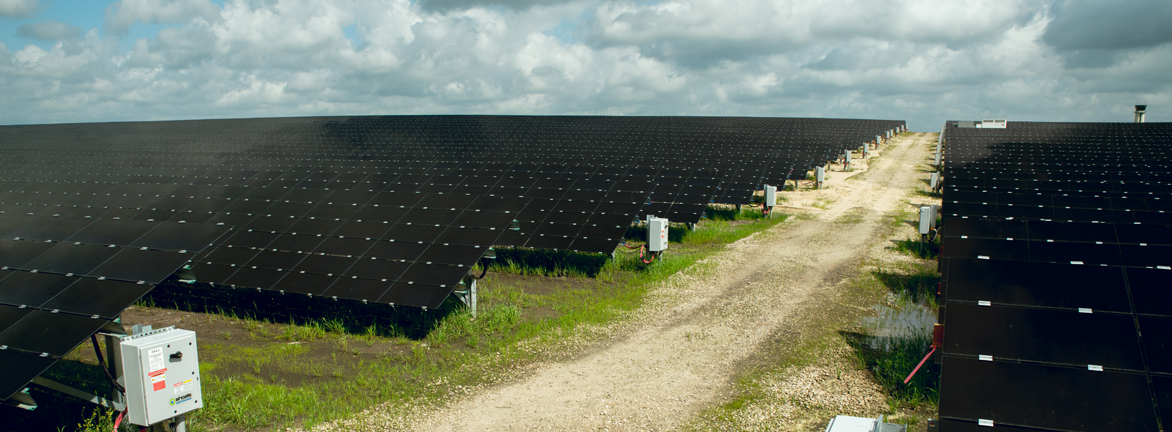
Objective 1B:
Solicit opportunity for new and emerging industries to locate in Tallahassee.
- Percent of employment in targeted industries. Target: 60%
- Number of jobs added to the economy annually.
Target: 2,500 jobs
- Gross Domestic Product of Tallahassee Metropolitan Statistical Area. Target: $15 billion
- Rate of unemployment. Target: Below the State average
- Total annual exports from the Tallahassee Metropolitan Statistical Area. Target: $350 million by 2024
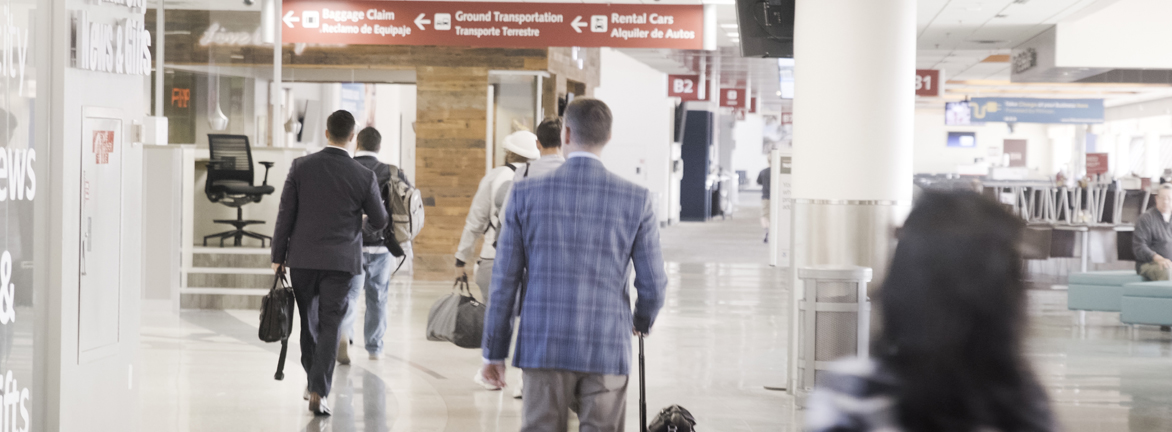
Objective 1C:
Increase Tallahassee International Airport’s economic impact on the region.
- Dollar value of Tallahassee International Airport’s economic impact. Target: $1 billion
- Annual total passenger traffic (enplanements and deplanements). Target: one million
- Annual total cargo (enplaned and deplaned). Target: 22 million pounds
- Acres of land leased near Tallahassee International Airport. Target: 100 acres
GOAL:
To be a leading community partner that actively connects residents to resources that remove economic and social barriers.

Objective 2A:
Support education, training, and job readiness for target populations.
- Percent reduction of disconnected youth.
Target: 30%
- Number of TFLA participants that have moved on to higher education, trade school, certification programs, or military over a five-year period.
Target: 500
- Number of TEMPO participants enrolled in a technical college or higher education institution over a five-year period.
Target: 150
- Number of TEMPO participants that have found employment paying a “fair” or “living wage” over a five-year period. Target: 100
- Number of TEMPO participants completing a GED over a five-year period. Target: 150
- Percent increase in teen program participation at the Palmer-Munroe Teen Center. Target: 3% annually
Initiatives
- Enhance partnerships with community reentry programs.
- Promote the City’s Explore Program and Junior Cadet Program.
- Host annual job fair.
- Continue providing free bus passes to our area’s K-12 students.
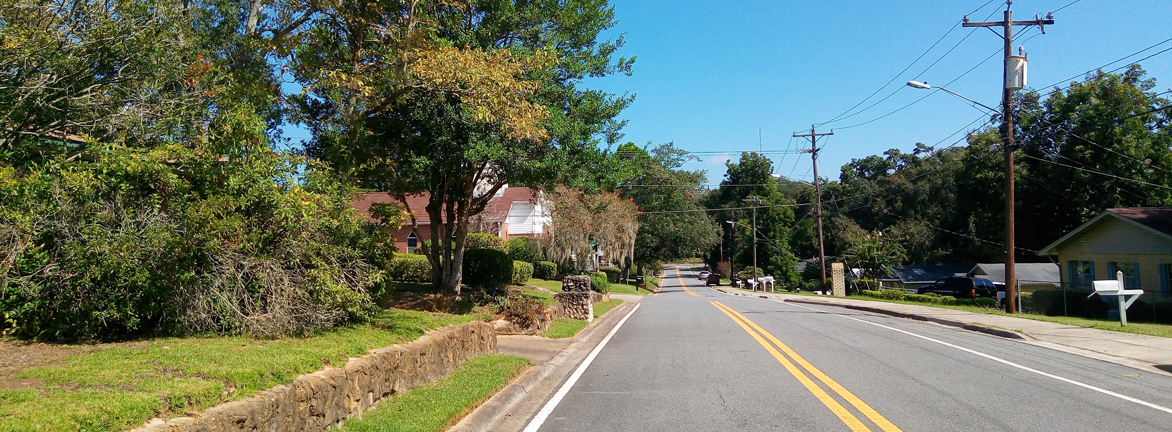
Objective 2B:
Rehabilitate and enhance the existing housing inventory to reduce the cost of living.
- Number of homes served annually by energy efficiency grants, audits, and rebates to improve affordability and reduce homeownership housing costs.
Target: 6,000
- Number of homes rehabilitated and/or receiving emergency repair. Target: 425
Initiatives
- Convert vacant student housing units into affordable housing units by working with Community Land Trust.
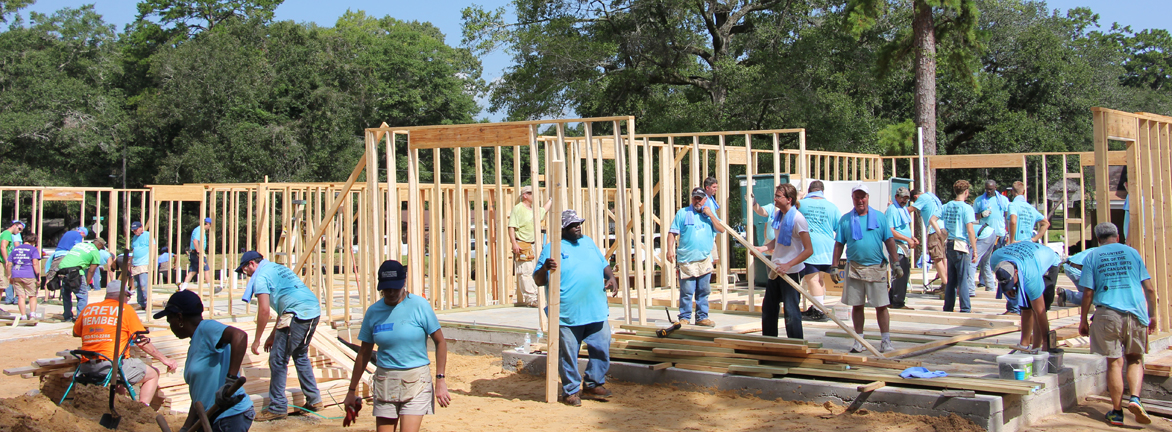
Objective 2C:
Facilitate and encourage the construction of affordable housing units..
- Number of new affordable homes or rental units built through the Community Land Trust. Target: 35
- Number of new homes built as a result of inclusionary housing programs. Target: 60
- Number of Habitat for Humanity homes built by City employees. Target: 10
- Number of down payment assistance grants awarded, creating pathways to home ownership. Target: 125
- Secure funding for Purpose Built Community and redevelopment of an additional 200 dwelling units at the Orange Avenue Housing Complex.
Initiatives
- Increase residential density within City limits.

Objective 2D:
Support community health and wellness initiatives.
- Percent of residents living within 1 mile of a fresh food source. Target: 100%
- Create performance matrix to measure Return on Investment (ROI) for Community Human Service Partnership (CHSP) by 2024.
Initiatives
- Leverage community resources to increase access to recreational
facilities and programs.
- Cultivate partnerships to further the implementation of wellness programs.
GOAL:
To be an impact-focused workforce that is inclusive, pioneering, and technology-driven.
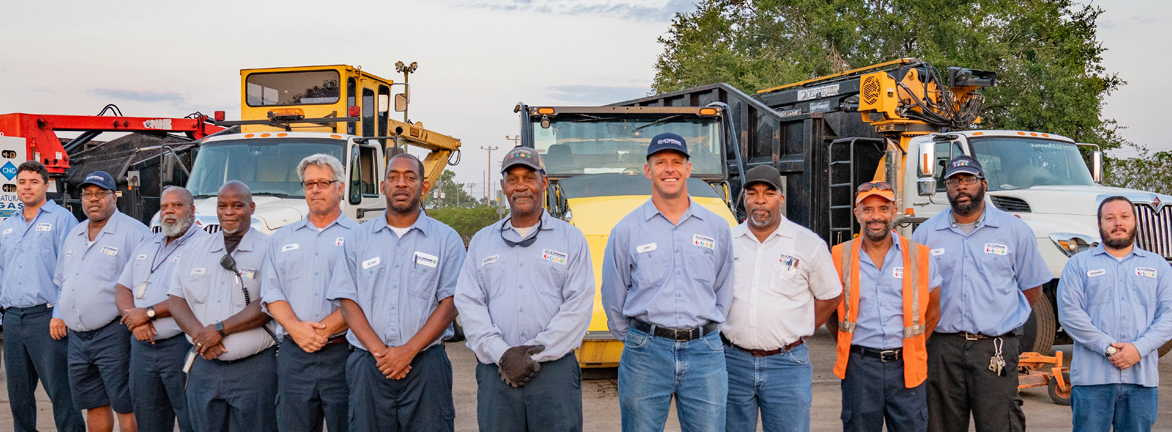
Objective 3A:
Attract, develop, and support the best talent.
- Rate of total employee turnover. Target: 6.5%
- Median number of days to fill a position from advertisement to offer. Target: 60 days
- Rate of employee satisfaction on annual Employee Engagement & Satisfaction surveys. Target: 90%
- Identification of City employees proficient in Spanish or American Sign Language.
- Grow employee participation in professional development programs by 10 percent by 2024.
Initiatives
- Recruit employees from local educational and vocational training centers.
- Have a City workforce that is reflective of community’s demographics.
- Develop and implement a City-wide Talent Development Plan.

Objective 3B:
Leverage technology to deliver faster, more convenient services.
- Percent of payments received digitally. Target: 80%
- Implement online customer service and inquiry portal by 2022.
Initiatives
- Implement fully paperless internal services.
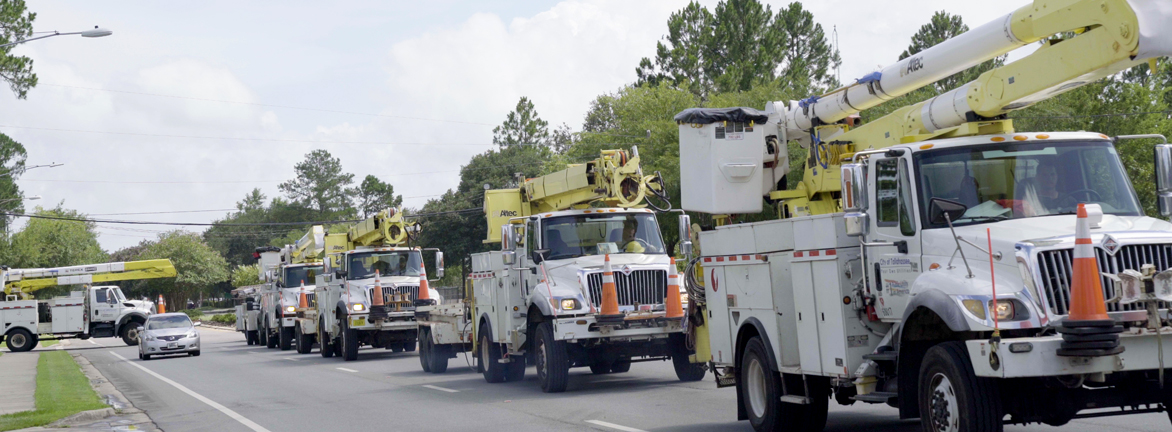
Objective 3C:
Map, analyze, and improve all work processes.
- Rate of availability for City fleet. Target: 96%
- Percent of budget document receiving ”Outstanding” ratings from the Government Financial Officers Association (GFOA). Target: 25%
- Achieve Sterling designation for Human Resources by 2022.
- Attain status as a “Top 100 Fleet.”
Initiatives
- Map, analyze, and enhance all departments’ procedures and processes.
- Evaluate service departments based on the customers they serve.
- Develop customer-centric service model within Procurement.
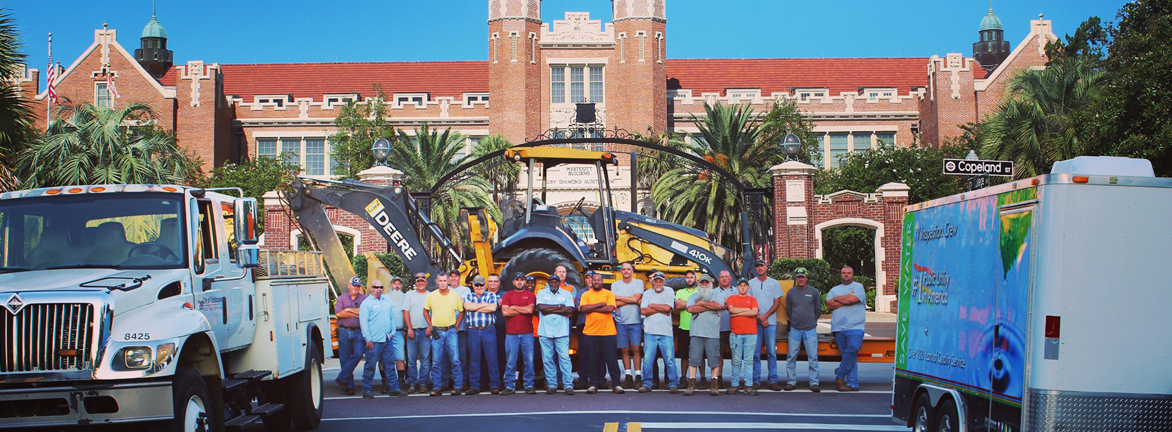
Objective 3D:
Maintain the City’s strong financial standing and fiscal stewardship practices.
- Percent of general employee pension funded. Target: 90%
- Percent increase of annual grant awards. Target: 5%
Initiatives
- Maintain a fully funded deficiency fund, in accordance with City policy.
- Maintain best-in-class municipal “AA” Bond rating.
GOAL:
To be the leading publicly owned utility that supports a growing and progressive community.
To be a city with an efficient public transit network supported by well-connected roads, sidewalks, transit
amenities, and public transportation.
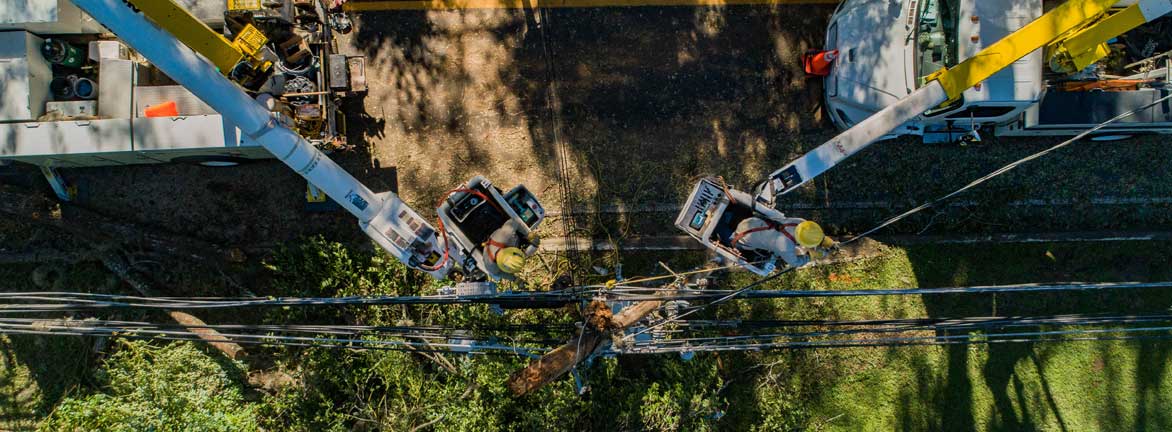
Objective 4A:
Be a leader in utility service delivery.
- Average customer outage response time for electric outages. Target: Less than 40 minutes
- Average customer outage response time for gas problems. Target: Less than 30 minutes
- Rate of availability for utility services (electric, gas, water, and sewer systems). Target: 99%
- Dollars invested in sewer collection system upgrades. Target: $61.3 million Target: 8.5%
- Provide electric and gas utility bills at or below the statewide average.

Objective 4B:
Be a leader in environmental stewardship.
- Percent of electric, hybrid electric, and CNG vehicles within inventory of City’s Light Duty Fleet by 2024.
Target: 25%
- Tonnage of recyclables collected annually. Target: 13,000 tons annually & 75% recycling participation rate
- Develop and adopt the City’s Clean Energy Plan for 2050 by 2024.
- Remain a Top 3 municipal leader in the prevention of sewer spills during the next five years.
- Reduce the number of impaired water bodies.
Initiatives
- Continue the reduction of total greenhouse gas emissions for the City’s electric utility.
- Improve water quality by reducing harmful discharge and runoff.

Objective 4C:
Ensure safe and clean drinking water.
- Win the “Best Tasting Drinking Water in Florida” award.
- Complete construction of new water quality laboratory by 2021.
- Invest $44.9 million in the enhancement and maintenance of the potable water system over the next five years.
- Secure funding to continue the TAPP program over the next five years.
Initiatives
- Maintain best in class water quality.
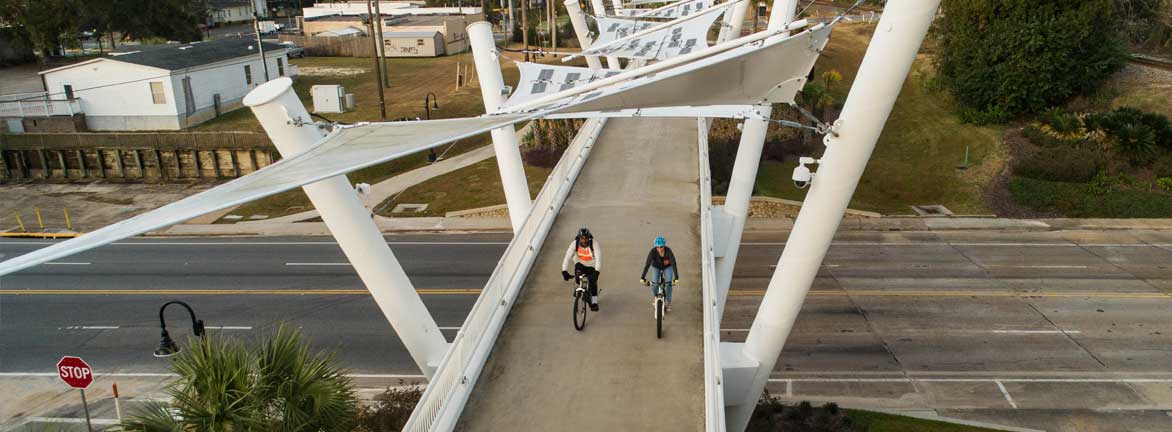
Objective 4D:
Enhance the city’s network of roads, bike lanes, and sidewalks.
- Percent of City-maintained roads rated as “Good,” “Very Good,” or “Excellent.” Target: 70%
- Percent increase of annual grant awards. Target: 5%
- Complete Weems road and mixed-use trail project by 2024.
- Become a “Gold Standard” Biking Community by 2024.
Initiatives
- Increase percentage of residents using alternative modes of transportation to/from work.
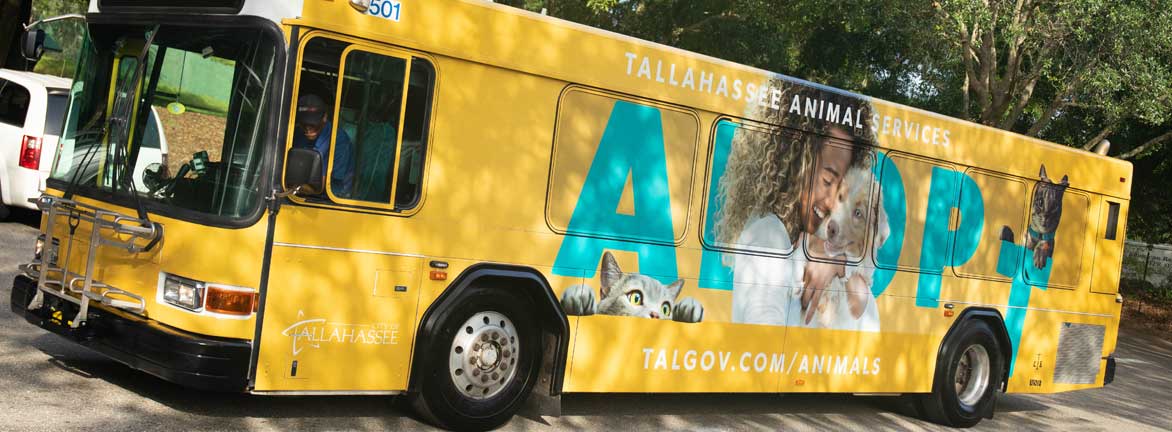
Objective 4E:
Ensure public transit is accessible, efficient, and equitable.
- Rate of on-time transit performance. Target: 90%
- Complete construction of a multi-modal transportation hub at C.K. Steele Plaza by 2022.
- Construction of the South City Transit Center by 2022.
GOAL:
To be a safe, resilient, and inclusive community.

Objective 5A:
Implement proactive community-based solutions to enhance public safety.
- Number of neighborhoods participating in neighborhood watch programs. Target: 45%
- Number of community-oriented policing activities held annually. Target: 35
- Number of Community Liaison Officers deployed. Target: 15
Initiatives
- Increase public and private partnerships for citizen maintained and installed camera technology.
- Increase the number of neighborhoods participating in the Neighborhood Public Safety Initiative.

Objective 5B:
Crime prevention through effective policing and public awareness campaigns.
- Rate of annual success for all TEMPO participants. Target: 10% or less
- Reduce vehicle burglaries through crime prevention and community partnerships to reduce the number of stolen firearms. Target: 15
- Reduce violent crimes by partnering with community leaders and other law enforcement agencies. Target: 10%
Initiatives
- Enhance specialized knowledge needed to address cybercrime.

Objective 5C:
Training and readiness of public safety employees.
- Number of training hours per police officer annually. Target: 3
- Number of emergency preparedness training hours conducted, including training and exercises. Target: 5
Initiatives
- Increase annual community-oriented policing, sensitivity, fair and impartial policing, and de-escalation training for TPD officers.

Objective 5D:
Provide state of the art technology to support public safety initiatives.
- Percent of the City covered by ALS certified fire stations. Target: 100%
Initiatives
- Implementation of license plate reader (LPR) technology at strategic locations in the city to enhance traffic and public safety.
- Enhance City capabilities to proactively detect criminal activity.
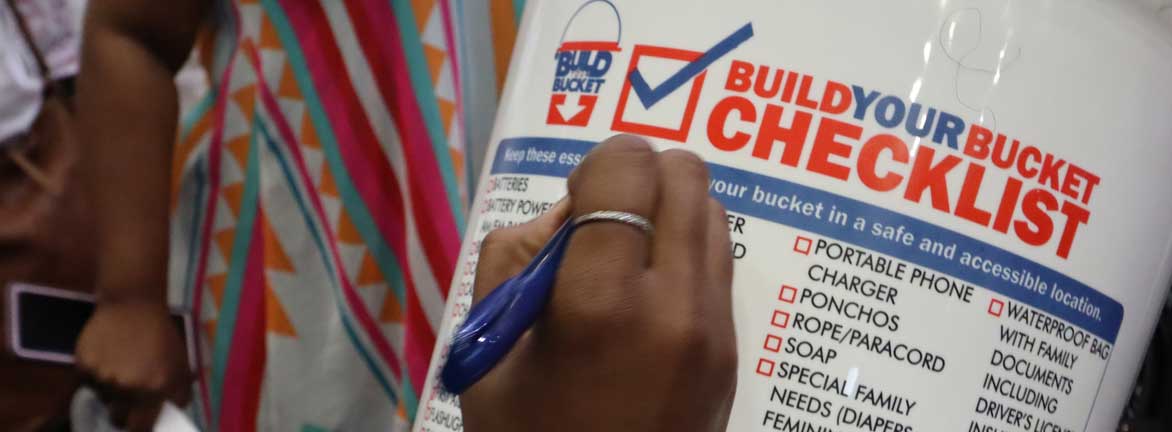
Objective 5E:
Enhance community preparedness initiatives.
- Number of attendees at disaster preparedness events. Target: 1,250
- Number of neighborhoods with PREP plans in-place. Target: 5
- Number of active shooter training seminars annually. Target: 25
- Facilitate annual table-top preparedness exercise for all response agencies.
Initiatives
- Identify faith centers that will serve as potential recovery staging sites for distribution of water, meals, and emergency goods.
- Facilitate annual large-scale community preparedness scenario, integrating all response and medical agencies.
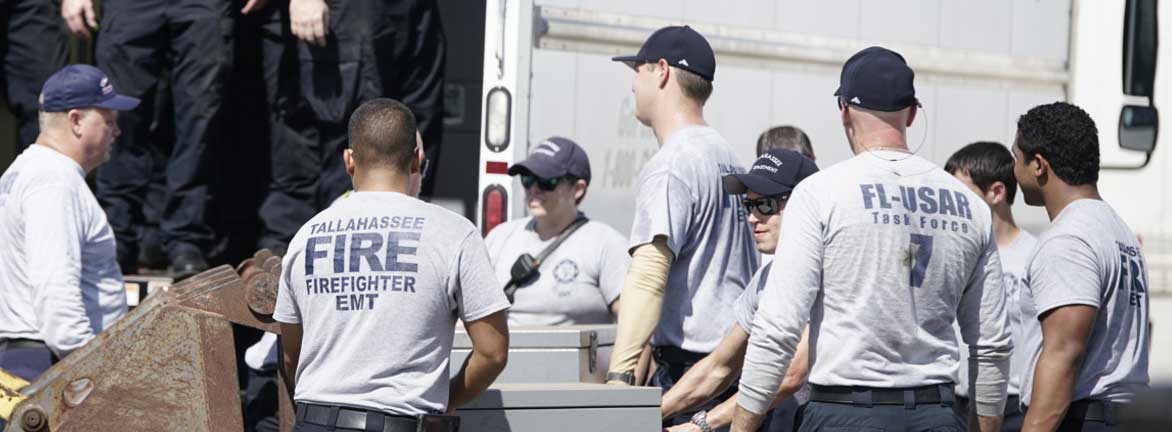
Objective 5F:
Create modern facilities to support community engagement and best-in-class public safety.
- Complete construction and begin operations at the new Public Safety Campus by 2024.
Initiatives
- Increase economic multiplier effect of police headquarters on the community and surrounding neighborhoods.
GOAL:
To enhance public trust through ethical business practices and transparent governance.
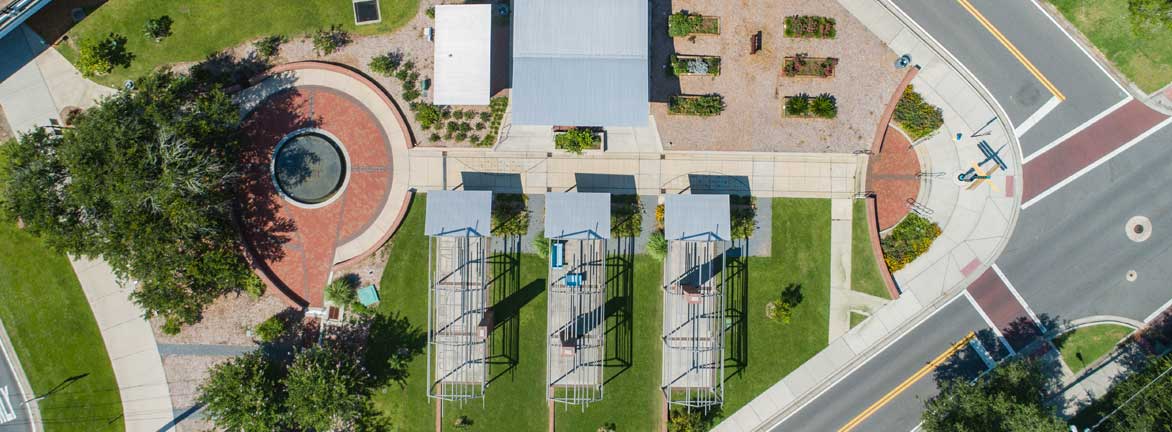
Objective 6A:
Infuse ethical practices into daily operations.
- Rate of compliance for annual employee ethics training. Target: 100%
- Rate of compliance for elected and appointed officials submitting financial disclosures with the State of Florida. Target: 35
- Adopt a No-Gift policy for all City employees by 2024.
Initiatives
- Increase public and private partnerships for citizen maintained and installed camera technology.
- Increase the number of neighborhoods participating in the Neighborhood Public Safety Initiative.

Objective
Enhance citizens’ access to city government operations and public meetings.
- Implement digital town hall at City Commission meetings by 2021.
Initiatives
- Enhance online transparency portal for registered lobbyists, city vendors, and the City’s budget.
- Regularly inform the public of progress toward achieving the targets within the 2024 Strategic Plan.
- Implement data-sharing with local law enforcement partners.
GOAL:
To be a creative and inclusive community with beautiful public spaces that protect and promote resources and
culture.

Objective 7A:
Maintain a safe, accessible, well-maintained network of parks, recreational facilities, greenways, and trails.
- Number of parks by 2024. Target: 100 parks
- Percent of residents of living within a 10-minute walk of a park or open space. Target: 100%
- Number of participants in City Parks and Recreation programs. Target: 612,000
- Complete construction of Market District Park by 2024.
- Complete construction of the second Senior Center by 2024.
- Achieve CAPRA accreditation (Commission for Accreditation of Park and Recreation Agencies) from the National Recreation and Parks Association by 2024.
Initiatives
- Continue with the implementation of Greenways Master Plan projects.
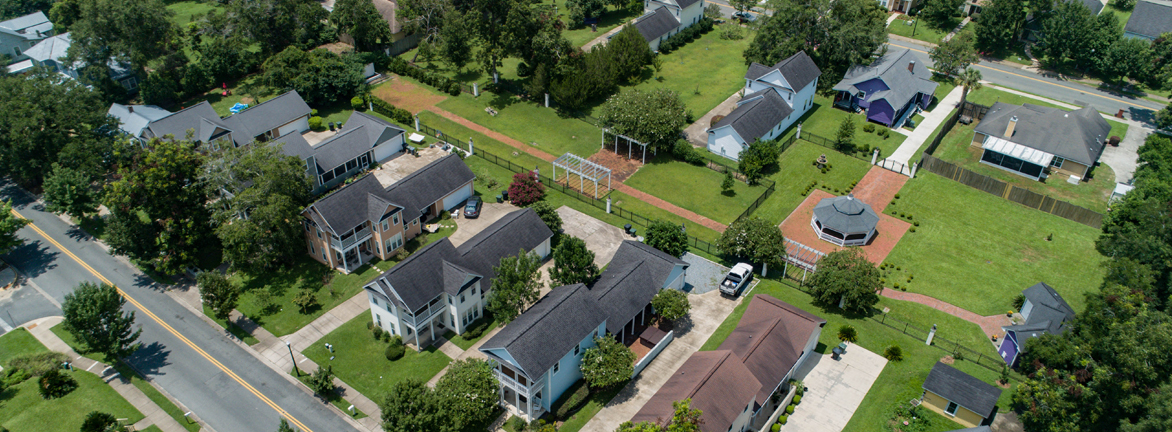
Objective 7B:
Enhance livability and preserve the unique characteristics of neighborhoods.
- Number of neighborhoods with an established liaison. Target: 225 neighborhoods
- Number of sidewalk projects completed annually. Target: 10
- Rate of voluntary compliance by property owners for code violations. Target: 90%
- Percent of urban forest tree canopy coverage. Target: 55%
- Achieve 30 consecutive years of “Tree City USA” status.
Initiatives
- Facilitate neighborhood entry signage and placemaking.

Objective 7C:
Keep residents and visitors informed about events and attractions in Tallahassee.
- Establish a Historic District / Museum Walk by 2024.
Initiatives
- Increase attendance at City-organized and City-sponsored festivals and cultural events year over year.
- Increase diversity and variety of City-sponsored events.
- Provide multiple platforms to inform citizens of local culture and City events.
2.1 FY19 Budget Calendar
2.2 FY20 Budget Process
Return to Top
The budget process is a formalized occurrence that involves collaboration and coordination among the respective city departments, Resource Management, the City Manager, the Executive Team, the City Commission, and the citizens of Tallahassee. The process results in annual operating and capital budgets and a five-year financial and capital improvement plan for the General Fund and Enterprise Funds.
The public is encouraged to provide input anytime of the year through various means, such as City Commission meetings, City Commission budget workshops and resident surveys. Two statutorily required public hearings on the budget are also held in September each year to solicit public input. In all, eight public meetings and workshops were held to discuss the FY20 budget. Building upon the goal of increased transparency, the city continues to refine the OpenGov platform to allow citizens to review not only budget information down to the account level, but also actual expenditures throughout the year.
Departments are responsible for developing their respective budget requests with support from Resource Management.
Throughout the year, City Commission budget workshops are held to discuss policy issues and long-term ramifications of budgetary decisions. The City Commission adopts a tentative millage rate for the assessment of ad valorem taxes in early July as required by state statutes. The final budget and the millage rate are adopted by resolution during the month of September, following two statutorily required public hearings.
The City’s budget is appropriated at the fund level. Revenues are budgeted at the fund level only, while Department expense budgets are contained within one or more cost centers. There are currently nearly two hundred cost centers across all departments.
Budgetary control is maintained at the department level, with Resource Management providing support to departments in the administration of their budgets. In accordance with the city’s budget transfer policy, departmental budgets can be amended in various ways depending on the type of transfer being considered.
Any budgetary amendment that is within the department’s appropriated budget and within the same fund can be authorized by the City Manager. Transfers between departments that cross funds or increase appropriations are made at the request of the City Manager and must be approved by the City Commission.
Budgetary amendments between divisions and within the same fund within a department may be initiated at the discretion of the department head except for transfers affecting personnel services, allocated accounts, accounts for insurance, bad debt, taxes or grants, articles for resale, fuel accounts, debt service, or interfund transfers. Requests for amendments to the line item exceptions are reviewed by Financial Management and approved by the City Manager or respective appointed official for transfers affecting the offices of the City Attorney, City Auditor, or City Treasurer-Clerk.
Since the implementation of the PeopleSoft financial system, budgetary control has moved from the line item level to major budget category. With the exception of the line items identified above, departments may over-expend line items provided there are available balances in the respective major budget category.
Currently, the budgets for general government operations (General, StarMetro and Golf Course Funds) are prepared on a modified accrual basis. This means that obligations of the city (i.e., outstanding purchase orders) are accounted for as expenditures, but revenues are recognized only when they are measurable and available. At year end, open encumbrances are reported as reservations of fund balance. The operating budget does not include expenses for depreciation.
The budgets for the city’s utilities (Electric and Underground) and other enterprise operations (Aviation, Building Inspection, Solid Waste, Fire, and Cemeteries) are budgeted on a full accrual basis. Not only are expenditures recognized when a commitment is made (e.g., through a purchase order) but revenues are also recognized when they are obligated to the city (i.e., water user fees are recognized as revenue when bills are produced).
Budget and accounting procedures are subject to modifications to comply with generally accepted accounting principles (GAAP) as well as the standards of the Governmental Accounting Standards Board (GASB).
2.3 Finance Policy Summary
Return to Top
The City regulates the planning, management, and financing of general government and enterprise operations through established policy standards. These policies define the appropriate use of year-end surpluses, transfers to general government operations, and establish operating reserves for select funds. Additional reserves such as the deficiencies, fleet, and Renewal, Replacement, & Improvement (RR&I) reserves are also governed by the City’s finance policies.
This fund supports many of the core city services including police, parks and recreation, road maintenance, housing initiatives, economic development, land use, environmental regulation, and animal services. The general government also provides an operating subsidy to Star Metro, the city's transit system.
Surplus
Any remaining balance is first used to fund the Deficiencies Reserve until the target level is achieved. After fully funding the deficiencies fund, any remaining balance may be used to support the subsequent year’s operating budget, up to a maximum of 5% of general government operating expenditures, and to buy down debt-financed capital improvement projects.
General Fund Transfer
$6.5 million in new funding is budgeted to support projects in FY20.
Operating Reserve
$50,000 is budgeted for Contingency in FY20.
Other
Deficiencies Reserve: Up to 5% of year-end surpluses will be allocated to support subsequent year’s operating deficit.
Fleet Reserve: The FY20 contribution is $1.8 million
RR&I: Undesignated balance set at a maximum of 3% of general government capital projects.
Established in 1902, the Tallahassee Fire Department (TFD) is a municipal fire department that provides fire suppression and emergency medical services in the City and the unincorporated areas of Leon County, Florida. The department is charged with the responsibility of protecting lives, property and the environment from hazardous conditions that threaten our community. This mission is accomplished through the provision of prevention and protective services specific to the incident need.
Surplus
Retained for fire operating and capital costs.
General Fund Transfer
No transfer.
Operating Reserve
No reserve.
Other
Not applicable.
The City of Tallahassee's Natural Gas Utility has provided clean, safe, economical and reliable natural gas to residents and businesses in a growing service area for over 60 years. The utility safely provides natural gas energy through hundreds of miles of underground gas mains, which serve over 30,000 customers in the Leon, Gadsden, and Wakulla areas. The highly trained staff works to ensure the integrity and dependability of the distribution system, and to assist customers with energy conservation and cost savings through natural gas use.
Surplus
Designated to fully fund the operating reserve and thereafter to fund gas system capital projects
General Fund Transfer
The transfer is based on CPI. The transfer for FY20 is $3.0 million.
Operating Reserve
Funded at 25% of the previous year’s General Fund transfer. Used to meet General Fund transfer, if required.
Other
RR&I:
Transfer budgeted at a level equivalent to depreciation expense as provided in the applicable rate study.
Surplus
Except for the In-formation Systems Services Fund, revenues for all funds are balanced against actual expenditures, resulting in zero surpluses.
General Fund Transfer
Not applicable. Excess balances from budgeted revenues are transferred to the original funding source at year-end.
Operating Reserve
No Reserve.
Other
Funding needed for large capital outlays in the Information Systems Services Fund may be accumulated over a period of time in its RR&I fund.
The Electric Utility serves over 120,000 customers in a 221-square mile service territory. It is the fourth largest municipal electric utility in Florida, and the 26th largest of over 2,000 municipal systems in the United States. The utility is comprised of six major divisions: Finance and Administration, Power Delivery, Energy Supply, System Operations, System Compliance, and System Integrated Planning. The Electric Utility develops 10-year sales forecast annually to use in the annual budget process.
Surplus
Operating fund balance after General Fund transfer minus bond reserves used to fully fund the operating reserve, with the balance designated for electric system capital projects.
General Fund Transfer
The transfer is based on CPI. The transfer for FY20 is $31.0 million.
Operating Reserve
The operating reserve is comprised of four subcomponents, with the primary purpose aimed at providing working capital. The working capital component is targeted with having a balance of 60 to 90 days of operating expenses. The other three components are fuel risk management, emergency reserve and rate stabilization.
Other
RR&I: Transfer budgeted at a level equivalent to depreciation expense as provided in the Comprehensive Annual Financial Report (CAFR).
The City of Tallahassee's Water Utility is responsible for ensuring the safe and uninterrupted delivery of the highest quality drinking water to its customers.
Surplus
Designated to fully fund the operating reserve and thereafter to fund water system capital projects.
General Fund Transfer
The transfer is based on CPI. The transfer for FY20 is $3.6 million.
Operating Reserve
Funded at 25% of the previous year’s General Fund transfer. Used to meet General Fund transfer, if required.
Other
RR&I:
Transfer budgeted at a level equivalent to depreciation expense as provided in the Comprehensive Annual Financial Report (CAFR).
The City Commission adopted an ordinance on September 10, 1986 establishing the Cemetery Perpetual Care Trust Fund (PCTF) for the maintenance and operation of the City cemeteries. Proceeds from this trust are transferred annually to support operations within the Cemetery Division. The City of Tallahassee owns and maintains five cemeteries totaling 133 acres. The City also provides maintenance services for the historic Plantation Cemetery.
Surplus
Retained for cemetery operating and capital costs.
General Fund Transfer
No transfer.
Operating Reserve
No reserve.
Other
Not applicable.
The City of Tallahassee's Sewer Utility is responsible for collecting, treating and disposing of wastewater, along with treating commercially pumped sewage. Wastewater is treated in the City’s Advanced Wastewater Treatment plant to a standard that more than exceeds regulatory requirements, as part of the City’s commitment to protecting the environment.
Surplus
Designated to fully fund the operating reserve and thereafter to fund sewer system capital projects.
General Fund Transfer
The transfer is based on CPI. The transfer for FY20 is $5.0 million.
Operating Reserve
Funded at 25% of the prior year’s General Fund. Used to meet General Fund transfer, if required.
Other
RR&I:
Transfer budgeted at a level equivalent to depreciation expense as provided in the Comprehensive Annual Financial Report (CAFR).
The Stormwater Fund manages and develops infrastructure for drainage, flood prevention and retention of storm water run-off to prevent pollutants from entering the aquifer. This includes capital project over-sight, maintenance of drainage infrastructure such as retention ponds and drainage outfalls, monitoring of lakes and ground water and raising public awareness of the environmental impacts of pollution, such as the Think About Personal Pollution (TAPP) program.
Surplus
Retained for stormwater system capital projects.
General Fund Transfer
The transfer to the General Fund represents administrative cost sharing only.
Operating Reserve
No Reserve.
Other
RR&I:
Maximum of 5% of capital projects funding sources, with a minimum level of 3%.
The Aviation Fund supports operations at the Tallahassee International Airport (TLH) by the Aviation Department and the Police Airport Unit. The Fund also makes contributions to the Fire Fund for the Tallahassee Fire Department’s operations at the airport.
Surplus
Retained within fund and allocated according to airline use agreement.
General Fund Transfer
No transfer to General Fund. Full recovery of cost.
Operating Reserve
Minimum of 1/12th of operating and maintenance budget for Airport designated for unanticipated non-recurring expenditures.
Other
RR&I:
Not applicable.
As part of the Community Beautification and Waste Management Department, the Solid Waste Fund provides for removal and disposal of garbage, bulky items and yard waste, as well as recycling and recycling services for residential and commercial customers within the city limits
Surplus
Retained for rate stabilization reserve.
General Fund Transfer
The transfer is based on CPI. The transfer for FY20 is $1.9 million.
Operating Reserve
No Reserve.
Other
RR&I:
Not applicable.
2.4 Budget Statutes and Guidelines
Return to Top
There are several statutory requirements, internal policies, and other provisions that direct the development of the budget and its implementation throughout the year.
Florida Statutes, Chapter 166 – This statute authorizes municipalities to levy taxes, issue licenses, and set user fees to raise money necessary to conduct municipal government activities. This chapter also requires that local governments adopt a balanced budget. The tentative balanced budget must be posted on the municipality’s official website at least 2 days before the budget hearing, held pursuant to s. 200.065 or other law, to consider such budget. The final adopted balanced budget must be posted on the municipality’s official website within 30 days after adoption.
Florida Statutes, Chapter 200 – This statute establishes procedures for adoption of local government annual budgets and limits ad valorem taxes to 10 mills. This statute also requires that local governments appropriate a balanced budget in which anticipated revenues and expenses are equal. Failure to comply with the provisions of the statute could result in loss of state revenue sharing and/or ad valorem taxes.
Ad Valorem Taxes – The Property Appraiser provides an annual estimate of taxable property values for the preceding year. Based upon adopted millage rates, municipalities are required to budget 95% of the gross taxable value for operating purposes. The city typically budgets 97%. In FY 2004, the city’s millage rate increased from 3.2 mills to 3.7 mills. This was the first millage rate increase since FY 1991. As a result of property tax reform legislation enacted by the Florida Legislature, the millage rate in the FY 2008 approved budget was reduced to 3.1686 mills. Due to the passage of Amendment 1 on January 29, 2008, the city’s millage rate for FY 2009 was 3.2115 mills. In FY 2010, the City Commission voted to increase the millage rate to 3.7 mills. The FY 2016 approved budget included a millage increase from 3.7 mills to 4.2 mills and in FY 2017 the millage was reduced to 4.1 mills. For FY 2020, the millage remains at 4.1 mills.
Florida Statutes, Chapter 202 – The Communication Services Tax consolidates a variety of taxes formerly imposed on telecommunication, cable, home satellite and related services. Opting for the highest rate allowable by law, 6.1%, the City of Tallahassee is required to forego permit fee charges for use of city right-of-way.
Community Redevelopment Agency, Florida Statutes Chapter 163, City of Tallahassee Ordinance 00-O-51 and 04-O-60 To encourage economic development, the City Commission established a Community Redevelopment Agency (CRA) and designated an initial district (Frenchtown) of approximately 1,400 acres for redevelopment. A second district (Downtown) was approved in June 2004. Each CRA district is entitled to 95% of the ad valorem tax increment generated within the district and the proceeds may be used only for improvements in the district.
Downtown Improvement Authority, Florida Statutes Chapter 71-935 – Established by a special act in 1971, the Downtown Improvement Authority may levy an additional ad valorem tax, not to exceed one mill, on properties within the district. Proceeds are used for improvements in the district and are administered by a separate Board of Directors.
Comprehensive Plan – The Tallahassee-Leon County 2010 Comprehensive Plan was originally adopted by ordinance in FY 1990 and is updated with biannual amendment cycles. The Plan includes capital improvements, transportation, historic preservation, utilities, recreation, and other elements which provide a framework for allocating budget resources. The Capital Projects Summary includes a listing of capital projects that address Comprehensive Plan initiatives by eliminating deficit levels of services or by maintaining existing levels of service.
Financing Policy, No. 224 Commission Policies – The financing policy establishes guidelines for distribution of year-end surpluses, transfers from the utilities to the General Fund, types and amounts of operating reserves, and funding for capital projects from undesignated fund balance year-end revenues. The policy also provides for full recovery of cost for enterprise funds, limits non-utility fee increases to a maximum of 20% per year unless otherwise approved by the City Commission; and allows discount fees for recreational programs for youth, seniors, and disabled citizens. The “Finance Policy Summary” chart shows the requirements of the policy as applied to each fund.
Risk Management Policy/Self-Insurance, No. 214 Commission Policies – This policy creates an internal service fund for payment of anticipated claims and judgments for coverage areas defined in the policy. In addition, a special Insurance Reserve Fund is established and funded to meet unanticipated losses from catastrophic events or claims in excess of the Risk Management Fund. This reserve is set at 150% of the average claims for the past five years or $3,000,000, whichever is greater.
Capital Project Management, No. 218 Commission Policies – This policy provides for preparation of an annual capital budget and for a five-year capital improvement plan. The policy also defines roles and responsibilities of city departments and management regarding contracts, supplemental appropriations, over expenditures, and project administration. The use of capital project overhead charges as an operating budget funding source also is established by this policy.
Local Option Sales Tax Management, No. 232 Commission Policies – This policy establishes the authority to provide advance funding for local Florida Department of Transportation (FDOT) projects for any project or phase of project included in the FDOT five-year work plan. It allows for advance funding without an agreement for repayment after conducting a public hearing. The policy also authorizes the use of short-term debt to cover cash flow shortages that may result from this practice.
Debt Management Policy, No. 238 Commission Policies – The debt management policy, along with an analysis of the city’s compliance with the policy, is included in the capital budget summary and in the capital improvement plan. Section 104 of the City Charter also specifies that general obligation debt will not exceed 20% of the assessed taxable valuation. Florida Statutes require that general obligation bonds be approved by referendum. The city currently does not have any general obligation bonds.
Vehicle Replacement Reserves – Funding for replacement of vehicles is included on an annual basis in the capital budget. To fund the reserves, each department is charged in the operating budget for a proportionate share of these costs based on equipment usage.
Bond Covenants – Prior to 1998, provisions of Bond Resolutions required that a minimum of 5% of prior year gross revenues be budgeted annually for Renewals, Replacements, and Improvements (RR&I) for system improvements in the utility enterprises. Covenants for the Energy System (electric and gas) bonds that were issued after 1998 do not specify an explicit amount or methodology but require a transfer to an RR&I fund.
Union Agreements – Currently, unions represent 677 FTEs (authorized positions). A total of 401 positions are subject to terms and conditions of the collective bargaining agreement with the Big Bend Chapter of the Florida Police Benevolent Association, Inc. (PBA) and 276 positions are subject to terms and conditions of the collective bargaining agreement with the International Association of Firefighters (IAFF). The City Commission and the PBA established a new three-year agreement, which was retroactively commenced on October 1, 2017 and extended through September 30, 2020. The IAFF ratified a new agreement on collective bargaining contracts for the existing firefighter unit (firefighters, fire engineers, and fire lieutenants) and the supervisory unit (battalion chiefs and captains), which was retroactively commenced on October 1, 2017 and extended through September 30, 2020.
Utility Rate Studies – Rate studies are prepared for each of the utility enterprise operations (electric and underground utilities). Revenue projections are prepared using historical weather patterns as well as other growth factors. These studies comprise the basis for the annual budgets for each of the utilities. Starting in October 2012, Water, and Sewer Utility rates increase annually by the CPI. This CPI increase methodology is the same for Electric, Natural Gas and Solid Waste rates. As of October 1, 2018, electric and natural gas rates remain below the state average.
Assessment and Fee Reviews – Fees and assessments are periodically reviewed to ensure recovery of costs to provide certain services. A cost of services study for the animal shelter was conducted in 2006, which recommended a plan to recover at least 50% of the operating costs through animal licensing fees, but this has not been implemented. The City Commission also increased building inspection fees in August 2009 to fully recover all eligible building inspection costs. Rates for electric, underground utilities and solid waste are set by ordinances which provide for annual increase based on the CPI. Updated Fire services fee were implemented on October 1, 2015.
Balancing a $161.4 million general fund budget, a $740.7 million citywide operating budget and a $158.8 capital budget is a time consuming and involved process. With investments in key areas, Tallahassee will continue to be the national leader in the delivery of public service with no increase to the millage rate. The 2020 budget is set to accomplish the following:
- $1 million increase to police salaries.
- Provide a $12 living wage for employees.
- $14.3 million in FY20 funding for 10 new sidewalks, and a commitment to fund 10 new sidewalks a year for the next 5 years.
- Expansion of Fire ALS coverage area to address the 58% increase in EMS calls since 2012.
- $1.1 million of outside agency direct grant funding, roughly $800K of which is devoted to human service providers.
- Additionally, the Tallahassee-Leon County Community Human Services Partnership (CHSP) provides $3.5 million a year to nearly 60 organizations providing direct human services to Tallahassee and Leon County’s population of 300,000.
- CHSP and direct City grants provide over $900,000 combined towards addressing homelessness through grants to the Kearney Center and HOPE Community, which together shelter and feed roughly 500-600 people on a given night.
- The millage rate will remain at 4.1000, which the Commission established as the millage rate “cap” at the June 5 budget workshop.
- Except for grant funded positions, or positions funded through updated rate studies, the budget does not include increases in the workforce.
- Community Human Services Programs (CHSP) will receive $2,165,850 in funding in FY20, and the Council on Cultural Arts (COCA) will receive $196,000.
- $1,139,102 in Outside Agency funding is provided in the FY20 budget for community and human services.
- Operating line items have been held at previous year levels for governmental fund, with enterprise funds adjusted by inflation per rate studies.
- Salary enhancements and minimums for general employees are the same as the prior year at 3% with a $1,000 minimum for general employees. The City also pays a living wage of $12/hour to all full-time employees, and seasonal/part-time employees with a consistent full-time schedule, impacting approximately 24 City employees. Raises and benefit cost sharing for fire and police personnel have been determined through collective bargaining agreements for fire (approved October 25, 2017) at 3% and police (approved April 11, 2018) at 3% with a 4.5% step for those eligible. These increases help employees offset increases in health care costs.
- A General Fund budget of $161.4 million for police, public infrastructure, parks and recreation, and housing and human services.
- Enterprise fund operating budgets of $561.4 million, which includes fire, utilities, building services, golf and cemeteries.
3.1 Position Summary
Return to Top
View full FY20 Position Summary
|
Department
|
FY18 Approved FTE's |
FY19 Approved FTE's
|
FY20 Approved FTE's
|
Net Change
|
|
City Commission/Office of the Mayor
|
13.00
|
13.00
|
13.00
|
0.00
|
|
City Attorney
|
21.50
|
22.50
|
22.50
|
0.00
|
|
Treasurer-Clerk
|
55.50
|
54.00
|
54.25
|
0.25
|
|
Auditing
|
8.00
|
8.00
|
8.00
|
0.00
|
|
Executive Services
|
13.00
|
13.00
|
16.00
|
3.00
|
|
Technology and Innovations
|
98.50
|
98.50
|
95.50
|
(3.00)
|
|
Human Resources & Workforce Development
|
34.50
|
34.50
|
35.00
|
0.50
|
|
Fire
|
299.00
|
299.00
|
300.00
|
1.00
|
|
Police
|
483.00
|
483.00
|
483.00
|
0.00
|
|
Parks, Recreation and Neighborhood Affairs (8)
|
177.25
|
178.25
|
179.50
|
1.25
|
| TEMPO (4) |
-
|
-
|
3.00
|
3.00
|
|
Planning/PLACE
|
25.00
|
25.00
|
25.00
|
0.00
|
|
Community Housing and Human Services
|
16.00
|
16.00
|
17.00
|
1.00
|
|
Aviation
|
55.00
|
54.00
|
54.00
|
0.00
|
|
StarMetro (5)
|
138.00
|
139.00
|
140.00
|
1.00
|
|
Energy Services - Electric & Gas (6)
|
325.00
|
325.00
|
330.00
|
5.00
|
|
Growth Management (1)(8)(9)
|
77.00
|
77.00
|
71.00
|
(6.00)
|
|
Community Beautification (8)
|
151.00
|
151.00
|
146.00
|
(5.00)
|
|
Real Estate Management (8)
|
8.00
|
8.00
|
8.00
|
0.00
|
|
Customer Services (5)
|
131.00
|
130.00
|
126.00
|
(4.00)
|
|
Communications
|
9.00
|
9.00
|
9.00
|
0.00
|
|
Community Relations
|
10.00
|
10.00
|
9.00
|
(1.00)
|
|
Administration & Professional Services (3)
|
69.50
|
70.00
|
72.00
|
2.00
|
|
Economic Vitality/Minority and Women Business Enterprises
|
8.00
|
8.00
|
-
|
-
|
|
Fleet Management (11)
|
82.00
|
82.00
|
81.00
|
(1.00)
|
|
Underground Utilities & Public Infrastructure (7)(9)
|
516.00
|
516.00
|
513.00
|
(3.00)
|
| Sustainability & Community Preparedness (8) |
-
|
-
|
15.00
|
15.00
|
|
Emergency Preparedness & Facilities Security (8)
|
4.00
|
4.00
|
3.00
|
(1.00)
|
|
Environmental Services & Facilities Management(11)
|
22.00
|
22.00
|
23.00
|
1.00
|
|
Ethics Office
|
1.75
|
1.75
|
1.75
|
0.00
|
Workforce Full-Time Equivalents (FTEs)
Added two new positions, funded by rate schedule changes (Resolution 19-R-35).
Includes Strategic Innovation, a new Dept ID discussed at February workshop, created with existing FTE from Executive Services and Fire.
Transfer of three positions from T&I to Admin & Professional Services – Enterprise Resource Planning (and one from Purchasing to ERP).
TEMPO is a new stand-alone department created in FY19, formerly a program under Parks and Rec.
Transfer of one position from Customer Services to StarMetro, discussed at February workshop.
Formerly Electric Utility; the relocation of Wholesale Energy and Gas Utility to this department was approved in February.
Traffic Division moved to UUPI with four FTEs, approved by the Commission in February.
Sustainability is a new department created in FY19, discussed at February workshop. FTEs moved from Growth Management, Parks and Rec, Real Estate, Emergency Preparedness, and Community Beautification to create the department with existing FTEs.
Transfer of one position from UUPI to Growth Management.
One position increased hours worked, from 0.5 FTE to 1.0 FTE.
Transfer of one position from Fleet to Environmental Services and Facilities Management.
3.2 City Departments
Return to Top
The City of Tallahassee is comprised of 28 departments.
Download all Department Descriptions
Administrative and Professional Services department includes:
- Accounting Services
- Purchasing Administration
- Accounts Payable
- Grants and Resource Management
This department’s responsibilities include development and preparation of the annual operating and capital budgets and related financial policies, enacting operational functions, preparation of the Comprehensive Annual Financial Report, writing for grant acquisitions, and organizing centralized procurement activities.
Click here to see the department’s budget.
The mission of the Office is to provide the City Commission with an independent, objective, and comprehensive auditing program of City operations, advance accountability through the provision of assurance and advisory services, and actively work with Appointed Officials in identifying risks, evaluating controls, and making recommendations that promote economical, efficient, and effective delivery of City services.
Click here to see the department’s budget.
The Aviation Department operates the Tallahassee International Airport. It consists of six divisions:
- The Executive Division
- Airport Properties and Development Division
- Finance and Administration Division
- Facilities Management Division
- Operations Division and Capital Programs & Environmental Compliance Division
Click here to see the department’s budget.

Goals and Objectives:
- Continue Tallahassee International Airport’s commitment to the development of successful air service partnerships to increase the availability of flight options.
- Tallahassee International Airport seeks to create public-private partnerships that will maximize long-term revenues for both parties and generate economic benefit to the City and the Florida Big Bend region through development of approximately 500 acres of aeronautical and non-aeronautical land.
- Airport Capital Program:
- Complete Airport Master Plan.
- Begin design and development of the Rental Car Quick-Turnaround Facility and Parking Garage.
- Begin design of the Federal Inspection Station (FIS).
- Begin design of the reconstruction of Runway 18/36.
Airport Passenger Statistics
FY2019 PFC 4th Quarter Report
Airport Statistics
FY2018 4th Quarter Report
The City Attorney's Office provides legal counsel and representation to the Tallahassee City Commission, City Manager and other Appointed Officials, city departments, and city-appointed boards and commissions in any suit, action or proceeding filed by or against them. Additionally, the City Attorney’s Office provides daily and routine legal advice to City department directors and their staffs on such matters as ethics, open meetings law, public records law and substantive areas such as land use law. The City Attorney’s Office, finally, has the responsibility to approve City contracts.
Clic0ere to see the department’s budget.
The Mayor and City Commission serve as the governing body of the City; they set policies and rules by which the City is operated, including establishing City goals and setting City tax rates.
Click here to see the department’s budget.
The Communications Department serves to keep the public informed of City issues by fostering effective two-way communications and applying innovative methods and technologies. They direct media relations, public information and engagement programs, and digital communications including the City’s website, social media and television station. Communications is responsible for creating and implementing marketing programs and emergency response and community preparation communications efforts.
Click here to see the department’s budget.
Community Beautification and Waste Management provides garbage, trash, and recycling services to 67,500 customers, both residential and commercial. In addition, the department is responsible for maintaining 13,500 acres of medians and rights-of-ways along major roadways within the City.
Click here to see the department’s budget.
Goals and Objectives:
- Provide cost effective residential and commercial solid waste collection services.
- Enhance employee and citizen safety by minimizing preventable accidents.
- Ensure commercial accounts are billed according to the bill segment.
- Develop and maintain tree inventory and maintenance.
- Increase focus on customer service, satisfaction and improved communication.
- Maintain city landscaped rights-of way and medians in good condition.
Community Relations, a function of the Department of Communications and Parks and Recreation and Neighborhood Affairs, serves to engage citizens through interactive educational outreach efforts focused on a variety of City services and programs ranging from utility services to transportation.
Click here to see the department’s budget.
The Customer Services division provides four main services. The Utility Services Administration unit provides various services including, but not limited to, management, administration, and procurement. It also provides policy/process review and audit responses for several departments. Secondly, Utility Customer Field Operations’ major function is to provide outstanding customer service while completing over 450,000 field orders annually including field meter reads, service disconnects/reconnects, and service investigations. This area is also responsible for revenue protection from theft and under-billed and non-billed services.
Furthermore, Wholesale Energy Services’ activities are carried out in support of the Electric and Gas Utilities’ goals of providing reliable electric and gas service at a reasonable price. Lastly, the Golf Program operates two public golf courses (Hilaman and Jake Gaither) which provide an opportunity for golfers of all ages and skill levels to enjoy the game of golf at affordable prices. The golf association hosts tournaments and instructional programs for their members.
Click here to see the department’s budget.
The Electric Utility serves over 123,000 customers in a 221-square mile service territory. It is the fourth largest municipality in Florida, and the 27th largest of over 2,000 municipal systems in the United States. The utility is comprised of six major divisions: Administration, Power Delivery, Generation, System Operations, System Compliance, and System Integrated Planning.
Click here to see the department’s budget.
Goals and Objectives:
- Safety: Electric is committed to providing a safe work environment for electric employees and customers.
- Customer Service/Reliability: Electric is committed to delivering reliable, high quality services that exceed customers’ expectations.
- Cost/Value: Electric is dedicated to delivering cost effective service to our customers.
- Regulatory: Electric is committed to complying with all applicable environmental and reliability regulations and requirements.
- Employee Excellence: Electric is committed to providing a workplace where employees are values, trusted and expected to perform their duties in a professional and business-like manner.
Ten Year Site Plan: 2018-2027
Ten-Year Site Plan: 2018-2027
The Emergency Preparedness and Facilities Security Departments provide security support to several City facilities and prepares for disasters affecting Tallahassee and surrounding communities. In 2016, due to a restructuring in the City of Tallahassee, Facilities Security was assigned to the Fire Chief. In 2017 the responsibility for Emergency Preparedness was assigned to the Fire Chief.
Facilities Security oversees the assigned parking at City Hall and provides security to several city facilities, while the department of Emergency Preparedness is responsible for City planning and preparation for operations before, during and after a disaster for all city departments. Emergency Preparedness and Facilities Security continues to ensure departments can meet the basic needs of citizens and city employees in a coordinated manner.
Click here to see the department’s budget.
Comprised of the Environmental Regulatory Compliance Division (ERC) and the Centralized Facilities Management Division (CFM). ERC assists City facilities and operations with achieving and maintaining compliance with all federal, state and local environmental laws, rules and ordinances including permitting, licensing, rule analysis, regulatory reporting, agency inspections, compliance testing, assessment and remediation of contaminated properties and enforcement negotiations, as well as managing the City’s Brownfields Redevelopment Program. CFM manages the citywide Centralized Facilities Management program which oversees and provides HVAC repair and maintenance, project management, architectural, and engineering design services for all aspects of construction, renovation, repair and maintenance of City facilities, buildings and their related structures.
The Ethics Board and independent Ethics Office maintain the integrity of city government and functions.
The Board also administers the Campaign Contribution Refund Program.
Click here to see the department’s budget.
The Executive Services Department includes the City Manager's Office consisting of the City Manager and three Assistant City Managers. At the direction of the City Manager, the three Assistant City Managers are responsible for managing several departments and ensuring that City Commission priorities are being addressed within their respective areas of responsibility.
Click here to see the department’s budget.
The Tallahassee Fire Department (TFD) is charged with protecting lives, property, and the environment from hazardous conditions that threaten our community. This mission is accomplished through the provision of prevention and protective services specific to the incident need.
Click here to see the department’s budget.
Goals and Objectives:
- Fully implement an extensive health and wellness program for department personnel.
- Implement a fire safety educational program with Leon County Schools.
- Implement a sponsorship program for Fire Standards program.
- Complete the purchase of emergency response replacement vehicles.
Fleet Management facilitates the acquisition, disposal, maintenance, repair, fuel consumption needs, and historical data collection for all the city’s vehicles, construction equipment and StarMetro buses. The Fleet program is comprised of five divisions: administration, service, parts, motor pool, garage unit and Bus Stop Maintenance and Construction.
The Growth Management Department facilitates well-designed, efficient, healthy, and safely built developments, while ensuring preservation of the natural and cultural environment. The Department promotes economic vitality and environmental sensitivity through coordinated plan review, permitting and inspection services. Responsibilities include development review services such as site planning, environmental permitting, building permitting, inspections and code enforcement to ensure that developments meet the requirements of the State of Florida Building Code as well as our local community standards.
The Growth Management Department includes the following four Divisions: Administration, Land Use and Environmental Services, Building Inspection, and Code Enforcement.
Click here to see the department’s budget.
Goals and Objectives:
- Review plans, issue permits and conduct inspections that uphold the requirements of City regulations and the State of Florida Building Code to ensure high levels of safety and quality of life in our community.
- Continue to utilize and develop efficient and effective policies and procedures.
- Provide the highest levels of customer service.
- Engage stakeholders and customers on Growth Management’s services and programs.
View FY19 Monthly New Construction Totals Document
The City’s Community Housing and Human Services Department provides services to the Tallahassee community through community housing, human services, and historic property preservation programs.
Click here to see the department’s budget.
The Human Resources & Workforce Development Department is responsible for the development, implementation and administration of all human resource systems, programs, policies and procedures, as well as managing and coordinating organizational initiatives that impact City employees.
Click here to see the department’s budget.
The Tallahassee-Leon County Office of Economic Vitality (OEV), was created within the consolidated Department of Planning, Land Management, and Community Enhancement (PLACE) and under the governance of the Intergovernmental Agency (IA) on February 29, 2016. The Office of Economic Vitality is based on an economic development model that ensures accountability, transparency, citizen engagement and professional management of economic development projects. The office works to create a one-stop-shop for the community’s economic development needs to include the development of a first-ever strategic plan. OEV also provides an enhanced level of service for cross departmental coordination for collection and utilization of data, implementation of projects and initiatives throughout the planning, land management and economic development spectrum.
Visit the Office’s website by clicking here.

Goals and Objectives:
- Implement a new collaborative economic development program of work that stimulates economic expansion in the city and county across all unique opportunities for growth.
- Better promote the area as a business generator, an ideal location to start and grow a business. Brand and market the community’s strengths in this capacity.
- Better identify, understand and align all available assets, organizations and resources towards shared economic growth objectives. Encourage collaboration among the many entities impacting the economic development environment to work together for maximum competitiveness.
- Leverage and maximize the existing framework toward the responsible allocation of resources to achieve today’s goals as well as to refine the foundation for future growth and opportunities.
Tallahassee-Leon County Economic Indicators
Economic Development Strategic Plan
The Parks, Recreation and Neighborhood Affairs Department provides recreational opportunities for the citizens of Tallahassee and Leon County, serves as liaison assistance for neighborhood associations, and operates the Animal Service Center. It is comprised of nine major areas: administration, parks, recreation, athletics, special events, tennis, animal services and control, senior services and neighborhood affairs.
Click here to see the department’s budget.

Animal Services Goals and Objectives:
- Increase the live release rate by 2%.
- Decrease intakes of dogs and cats by 500 animals.
For metrics related to the Animal Services Center,click here.
The City of Tallahassee and Leon County Government created the joint Department of Planning, Land Management and Community Enhancement – PLACE – to better integrate the implementation, administration and executive oversight of three interrelated programs: the myriad of Planning functions, the Office of Economic Vitality economic development programs, and Blueprint infrastructure projects. The Planning (PLACE) Department consists of the following divisions: Comprehensive Planning, Land Use/Zoning, Urban Design, Planning Commission, and Local Planning Agency.
Click here to see the department’s budget.
Continuing the “Tradition of Service”, the police department is a nationally accredited agency that works in partnership with the community and other City departments to provide services that offer a safe environment for its citizens to work, live and recreate.
Click here to see the department’s budget.

Goals and Objectives:
A. Public Safety Strategies
- Strengthen community-policing efforts through increased collaboration with community members, business owners and government partners through a comprehensive community oriented policing approach.
- Reduce violent crime through the deployment of additional resources to high crime areas, increased collaboration with community partners, and the enhancement of predictive policing capabilities through the implementation of modern technology.
- Enhance the safety of motorists and pedestrians by reducing the number of traffic fatalities and serious traffic crashes.
B. Facility Initiative (Public Safety Campus)
- Develop specifications and a plan of action to develop a new Police Facility based on the current and future needs of the Tallahassee Police Department.
- Ensure sustainability within the existing facility.
C. Workforce/Recruiting Initiatives
- Recruit potential officers through educational institutions, community partnerships, military transition programs, and other engagements that promote an interest in a law enforcement career.
- Expand workforce development and leadership training opportunities that prepare all members to assume additional responsibilities with confidence and to promote core values such as accountability, trust, equitable treatment, and reliability.
- Develop a comprehensive Wellness Program for all members of the agency.
D. Communication Initiatives
- Implement coordinated communication that facilitates a two-way effective information flow with the community.
Real Estate Management provides comprehensive real-estate services for all city departments and is responsible for the acquisition of all real estate for capital improvement projects such as roads, stormwater facilities, and utilities (like electric, gas, water and sewer). They oversee management of City-owned parking facilities, five cemeteries, Renaissance and Gemini office buildings, surplus property, leases and maintenance of the City’s real estate inventory.
Click here to see the department’s budget.
The Resilience Office partners across city government and stakeholders to build our community’s capacity to thrive in the face of acute shocks (disaster or climate events) and chronic stresses (socio-economic, infrastructure or institutional weaknesses). Under the leadership of the City’s Chief Resilience Officer, the office develops a cohesive long-range strategy and oversees the integration of effective initiatives across city plans, programs, and policies.
Click here to see the department’s budget.
StarMetro, the transit system for the City of Tallahassee, operates 12 weekday cross-town routes, as well as university routes for Florida State University (FSU) and Florida Agricultural & Mechanical University (FAMU). StarMetro also provides demand response (para-transit) transportation to senior, disabled and low-income customers in Tallahassee and Leon County. StarMetro is comprised of five divisions: Administration, General Transit Operations, Para-transit Operations, Planning and Maintenance.
Click here to see the department’s budget.

Goals and Objectives:
- Focus on enhancing StarMetro’s core functions to improve overall performance.
- Identify service enhancements to meet the needs of the citizens.
- Improve coordination and communication between all service providers, stakeholders, and transit users.
- Identify capital improvements and develop a plan to utilize resources and leverage any federal/state/grant opportunities.
- Focus on priority projects such as the South City Transfer Center and purchase of 15 electric buses and charging stations.
View Star Metro’s most recent Federal Transit Administration Agency Profile
View FY18 Star Metro Performance Measures document
Technology and Innovation (T&I) is responsible for innovating and providing computer, telecommunications, radio services, public safety technology, SCADA maintenance, and GIS support for all city departments. The focus is to lead our city to be a dynamic force of innovation while efficiently managing the City of Tallahassee’s technology resources. Revenues are derived through the distribution of costs to user departments. The department now reports directly to the City Manager as a part of the FY16 re-organization.
TEMPO provides a path for Disconnected Youth to essential services; enabling vocational education opportunities; connecting youth to workforce training through short-term apprenticeships with local organizations; and enabling the benefit of workforce training through job placement.
The mission of the Treasurer-Clerk’s Office is threefold: through the development and application of sound financial management practices and policies, place the City in the most advantageous and secure financial position possible; through sustainable benefit design and skillful administration, provide City employees with the ability to secure a sufficient retirement; provide city government and the residents of Tallahassee with quick and accurate access to all City records and actions.
The City Treasurer-Clerk oversees five divisions: Asset/Liability Management is responsible for banking relationships. Records Management is responsible for preparation and maintenance of City Commission minutes, educating City employees on State records retention requirements and use of the City’s imaging system, managing the City’s archives program, responding to citizen public records requests, and maintaining active contract files and other official City records. Retirement Administration is responsible for administration of the retirement system for all active and retired City employees. Revenue Management is responsible for administration of the communications services tax and public service tax programs. Risk Management is responsible for the administration of the City’s self-insured programs and the procurement and administration of commercially purchased insurance for all other applicable exposures.
Click here to see the department’s budget.
The Underground Utilities and Public Infrastructure department provides multiple services through multiple divisions. The City’s Public Infrastructure division of Underground Utilities is responsible for the preservation and maintenance of more than 650 miles of streets and more than 500 miles of sidewalks. The department provides construction services that either directly provide or manage construction. Additionally, Public Infrastructure is responsible for all drainage structures within the City.
The City’s Underground Utility divisions is responsible for water, wastewater and stormwater operations. From flood prevention and resource preservation to ensuring the safe and dependable delivery of the highest quality drinking water, the City is committed to meeting the ever-changing needs of our community. Both operational and capital investment strategies are in place to support the City's ongoing commitment to protect the environment and delivering vital services in a cost-effective, efficient and environmentally sound manner.
Click here to see the department’s budget.
3.3 Analysis and Trends of FY20 Revenues
Return to Top
Click here to read an analysis of trends for major revenues of the FY2020 budget.
3.4 FY20 Funding for Outside Agencies
Return to Top
The City provides grants to local agencies that support its mission and values in a variety of ways. The Community Human Services Partnership (CHSP) is a joint City/County funded evaluation process. It awards approximately $2 million in human service grants to local non-profit providers. FY19 is the first of a two-year funding cycle for CHSP. CHSP is currently undergoing a “needs assessment” to recommend changes to funding categories and allocations to better serve the community. The City also provides $196,000 of support to the Council on Culture and Arts (COCA), serving as a facilitator and voice for local arts agencies.
Separate from these processes, the City recognizes and supports local “outside agencies” that do valuable work in the community. The City has $1,139,102 budgeted for 27 outside agencies in FY20, an increase over FY19’s $1,017,202.
In FY20, responsibilities for management and evaluation of the agencies will be delegated to various departments throughout the City where the mission and actions of the agency relates to or complements the goals and services of the department. The funding requests will be transitioned to those department’s respective budgets.
In FY21, agencies providing human services will transition to compete in the award-winning CHSP process. Agencies whose scope of work does not include providing direct human services (and thus, does not comply with CHSP) will transition to City vendors, contracting with departments to meet deliverables that benefit the City and local community. The City will also create the Bridge program to provide an opportunity for human-service-providing agencies who have not applied for CHSP to seek grant funding in the off years of CHSP’s two-year funding cycle to build their capacity with the goal of competing in CHSP in future years.
View FY20 Funding for Outside Agencies
4.1 Capital Budget Process
Capital budgets focus on spending with impacts that last longer than a single budget year. The City uses capital budgeting to ensure the proper maintenance and investment in its infrastructure. The development of the capital improvement plan (CIP) is continuous as departmental project managers review the timeline of each project and maximize the use of available funding throughout each year. Departments begin reviewing their capital plans in the first quarter of the fiscal year. They adjust their plans as needed throughout the year prior to the City Commission passing the next year’s budget.
Department staff, Resource Management and the Treasurer-Clerk’s office work together on funding options for capital needs using a combination of cash and debt as appropriate within policy and credit rating standards.
Impact of Capital Investments on Operating Budget
Operating budgets supply the funding for capital expenditures. Multi-year capital financing plans are implemented to spread the cost of these projects over their useful life, financing them with annual transfers for debt service on capital or utility bonds as well as transfers to Repair, Replace and Improve (RR&I) funds. To see department budgeted RR&I transfers, click here. This allows operating funds to adjust for the cost of capital financing incrementally from year to year, matching the flow of revenues to capital expenses.
4.2 Department Capital Projects and Descriptions
Return to Top
View Full FY20 Department Capital Projects and Descriptions (OpenGov)
4.3 Five Year Capital Improvement Plan Budget
Return to Top
View Five Year Capital Improvement Plan Budget
4.4 Schedule of Debt Service
Return to Top
View the FY20 Debt Service
4.5 Debt Policy Analysis
Return to Top
The City’s debt policy identifies debt-financing goals the City seeks to achieve. It provides targets rather than requirements and applies to all debt issued by the City of Tallahassee. The policy also addresses debt structure, debt issuance, debt refunding, debt targets, and other topics.
- General Government Bonds fund capital projects of the general government. General government non-ad valorem revenues secure these bonds. Most commonly, the half-cent sales tax, local communications tax, and guaranteed entitlement revenues are pledged to secure the bonds.
- Energy System Bonds fund capital projects of the electric and natural gas systems. Revenues of electric and natural gas funds secure these bonds, with each fund paying for the debt service associated with its projects.
- Consolidated Utility System Bonds fund capital projects for the water, sewer and stormwater facilities. Utility revenues secure the bonds, with each fund paying for the debt service that is associated with its projects.
- Airport System Bonds fund for capital projects for the City’s airport. Revenues from the aviation fund secure these bonds.
- Maintain sufficiently high bond ratings to assure access to affordable credit and low-borrowing costs
- Ensure intergenerational equity by amortizing debt within the expected useful life of a project or asset
- Coordinate the City’s capital improvement program with its debt management policy to develop a coherent, long-term financing plan for the City’s capital funding needs
- Maintain flexibility for the future financial needs of the City
Debt Targets:
The City will monitor and report debt ratios annually and at the time of each debt issuance, and strive to structure debt to meet the following targets:
- Targets for liquidity, operating margins and debt burden
General Fund
Liquidity: Spendable General Fund Balance of 15% of General Fund expenditures.
Debt Service as a % of Expenditures/Coverage Ratio: Net Debt Service to be less than 10% of General Fund Expenditures
Debt Burden: Debt as a % of Full Market Value in less than 2%
Consolidated Utility System
Liquidity: 150 days cash on hand
Debt Service as a % of Expenditures/Coverage Ratio: Debt Service Coverage of 1.50x or higher
Debt Burden: Debt as a % of Capital Assets less than 50%
Energy System
Liquidity: 210 days cash on hand
Debt Service as a % of Expenditures/Coverage Ratio: Debt Service Coverage of 2.0x or higher
Debt Burden: Debt as a % of Capital Assets less than 60%
- Targets for the structure of the City’s debt portfolio at the time of issuance
General Fund
Average Life (Range): 10 - 15 years
Viable Rate (VR): 20%*
Rolling Medium Term Notes (RMTN): 20%*
Combined (VR/RMTN): 30%*
Consolidated Utility System
Average Life (Range): 15 - 20 years
Viable Rate (VR): 25%
Rolling Medium Term Notes (RMTN): 30%cccc
Combined (VR/RMTN): 40%
Energy System
Average Life (Range): 15 - 20 years
Viable Rate (VR): 25%
Rolling Medium Term Notes (RMTN): 30%
Combined (VR/RMTN): 40%
*The City shall not exceed the greater of these percentages or $50 million individually for Viable Rate and Rolling Medium Term notes and $90 million combined for Viable Rate and Medium Term Notes at the time of issuance.
Conclusion: The City’s debt policy establishes a series of criteria to monitor the impact and extent of capital debt issuance and capital financing. All projects presented in planned future bond issues comply with this policy.
4.6 Capital Funding Sources
Return to Top
Bond Proceeds are funds received through bond revenue to pay for water, wastewater, electric, gas, and general government capital infrastructure projects. Bond proceeds in this year’s capital improvement plan include:
- Airport debt
- Bank loans
- 2014 Bonds
- 2018 Bonds
- 2018 Consolidated Utility Services Bonds (CUSB)
- Future bonds for public infrastructure
Bond Proceeds are funds received through bond revenue to pay for water, wastewater, electric, gas, and general government capital infrastructure projects. Bond proceeds in this year’s capital improvement plan include:
- Airport debt
- Bank loans
- 2014 Bonds
- 2018 Bonds
- 2018 Consolidated Utility Services Bonds (CUSB)
- Future bonds for public infrastructure
Special Funds derive from various sources including internal service capital funds, charges for services dedicated for capital improvements, proceeds from sales, accounts receivable funds, and reserves. Special funds used in this year’s capital improvement plan include:
- 800 MHz Fund
- Aviation facility charges and investment funds
- Electric Accounts Receivable
- Energy Conservation Fund
- Fire Construction Fund, Fleet Reserve Fund
- Water and Sewer System Charges
- Traffic Project A/R Fund
- Water A/R Project Fund
Renewal, Replacement, & Improvement (RR&I) funding is cash received from each department’s operating budget that is dedicated for capital improvements. Undesignated balances are accumulated through balances in closed projects, unprogrammed RR&I funding and interest earnings. Those RR&I funding sources used in this year’s budget include RR&I funding from originating from a variety of operating funds:
- Airport
- Electric
- Internal Service Funds
- Gas
- Sewer
- Stormwater
- Water utilities
State Funds include grant funding from State organizations that provide additional support to community initiatives. The following funding sources are dedicated to projects in this year’s capital improvement plan:
- Community Development Block Grant
- Florida Department of Transportation grants
Federal Funds include grant funding from Federal organizations that provide additional support to community initiatives. Federal Aviation Administration grants are the main source of federal funding this year.
4.7 Browse FY20 Capital Projects in OpenGov
Return to Top
Through OpenGov, you can see all our Capital Projects.
4.8 Highlighted Capital Projects
Return to Top
FAMU Way

The FAMU Way Extension Project will create a new east-west roadway between the current end of FAMU Way at Wahnish Way and Lake Bradford Road and includes enhancements to the existing FAMU Way corridor. The project will be completed in three phases.
See more...
Weems Road Projects

As part of the City of Tallahassee’s commitment to investing in its infrastructure, on Monday, April 29, crews began construction of a new two-lane road that will extend Weems Road from Mahan Drive to Capital Circle via a connection at Automotive Way. Once completed, this new route will help alleviate traffic in the area near the Capital Circle and Mahan Drive intersection.
See more...
Southside Infrastructure Improvements

Upcoming infrastructure projects, from new sidewalks to water/sewer upgrades and more are underway near FAMU Way, the Bond community, Red Arrow Road, McCaskill Avenue/Iamonia Street, Lake Bradford Road/Gamble Street and Orange Avenue/Liberty Park neighborhood.
See more...
Sidewalks

The City has committed to initiating ten new sidewalks a year starting in FY20. The ten sidewalks identified for FY20 were selected based on both priority and readiness for construction. These projects provide safe non-vehicular transportation options for citizens to access to schools, parks and transit.
The FY20 Capital Improvement Plan continues the maintenance of roads and sidewalks of the public infrastructure priority with funding of $6.5 million for the Street Resurfacing Program and $1 million for Sidewalk Maintenance. Through master planning and proactive approaches, the implementation of these programs results in maintenance of over 70 miles of roadways and elimination of over 10,000 sidewalk trip hazards annually.
See more...
The City regulates the planning, management, and financing of general government and enterprise operations through established policy standards. These policies define the appropriate use of year-end surpluses, transfers to general government operations, and establish operating reserves for select funds. Additional reserves such as the deficiencies, fleet, and RR&I reserves are also governed by the City’s finance policies.
5.5 View the Entire FY20 Approved Budget in OpenGov
Return to Top

Contributing Staff
Raoul Lavin - Assistant City Manager, Administration and Professional Services
Robert Wigen - Director, Resource Management
Amy McLean - Senior Management Analyst
Matt Matherne - Senior Management Analyst
Cody Walden - Management Analyst
David Wheeler – Financial & Systems Analyst
Donna Reynolds - Administrative Specialist
Josh Jordan - Management Analyst
Kristie Mill - IT Support
Landon Pokela - Management Analyst
Max Stout - Management Analyst
Sarah Roberts - Management Analyst
Veronique Floyd-Administrative Specialist
Special Thanks
Office of Economic Vitality
Office of Communications
The City of Tallahassee was awarded the Distinguished Budget Presentation Award by the Government Finance Officers Association of the United States and Canada (GFOA) for the fiscal year 2019 budget. This is the 33rd year the City of Tallahassee has received this award. The continued recognition is due to the strong leadership of current and prior City Commissions. The award supports the budget presentation is of a high quality and reflects guidelines set by the National Advisory Council on State and Local Budgeting.
Distinguished Budget Presentation Award
Fiscal Year 2018 Distinguished Budget Award
ACCRUAL BASIS - A basis of accounting in which transactions are recognized at the time they are incurred, as opposed to when cash is received or spent.
AD VALOREM TAXES - Taxes levied on both real and personal property according to the property's valuation and the tax rate.
ADVERTISING - Costs for legal advertisements, posters, publication of public notices, resolutions, ordinances, and bid invitations.
APPROPRIATION - A legal authorization to incur obligations and to make expenditures for specific purposes.
AVAILABLE (UNDESIGNATED) FUND BALANCE - This refers to the funds remaining from the prior year which are available for appropriation and expenditure in the current year.
BAD DEBT - The estimated amount of accounts owed to the city (receivables) that will not be collected during the year. This includes utility accounts, accident damage repair accounts, and other miscellaneous account receivables which are deemed uncollectible.
BALANCED BUDGET- The revenues must equal the expenditures. Florida Statute 166 reads, “The amount available from taxation and other sources, including balances brought forward from prior fiscal years, must equal the total appropriations for expenditures and reserves."
BOND - Evidence of the local government's obligation to repay a specified principal amount on a future maturity date, plus interest. Bonds are issued to obtain money for capital projects. Revenue bonds pledge a particular source of revenue usually generated by the new asset as the means of repayment.
BOND REFERENDUM - The process by which voters approve or disapprove a proposed general obligation bond issue.
BOND REFINANCING - The payoff and re-issuance of bonds to obtain better interest rates and/or bond conditions.
BOND RESOLUTION - The document by which the local government authorizes the sale of bonds.
BUDGET - The formal allocation of resources (dollars) to various programs with the intent of performing a service.
BUDGETARY BASIS - The basis of accounting used to estimate financing sources and uses in the budget. This generally takes one of three forms: GAAP, cash, or modified accrual.
BUDGET CALENDAR - The schedule of key dates that the city follows in the preparation and adoption of the budget.
CAPITAL ASSETS - Assets of significant value and having a useful life of several years. Capital assets are also called fixed assets.
CAPITAL BUDGET - The appropriation of bonds or operating revenue for improvements to facilities and other infrastructure.
CAPITAL IMPROVEMENTS (Capital Projects) - Expenditures related to the acquisition, expansion, or rehabilitation of an element of the government's physical plant; sometimes referred to as infrastructure.
CAPITAL IMPROVEMENTS PLAN (CIP) - A plan for capital outlay to be incurred each year over a fixed number of years to meet capital needs arising from the government's long-term needs.
CAPITAL OUTLAY - Fixed assets which have a value of $750 or more and have a useful economic lifetime of more than one year or assets of any value if the nature of the item is such that it must be controlled for custody purposes as a fixed asset.
CAPITALIZED OVERHEAD - Charges assessed to capital projects for administrative and labor related services.
CAPITALIZED WAGES – Direct salaries or wages of city employees which are paid from funding appropriated in the capital budget.
CASH BASIS - A basis of accounting in which transactions are recognized only when cash is increased or decreased.
CITY CONTINGENCY - Amount budgeted to meet unexpected operating expenditures that occur during the current year.
COST OF GOODS SOLD (COGS) FUEL STORES - Fuel purchased by the city garage and then resold by the city for use in the city fleet.
COST OF GOODS SOLD (COGS) MATERIALS STORES - The cost of materials and supplies which are resold by the city. This includes articles for resale by the city garage parts division, the city warehouse, and golf courses.
COST OF GOODS SOLD (COGS) NATURAL GAS - This account represents the cost of natural gas purchased by the city electric department for use to generate electricity and natural gas sold by the gas utility department to gas customers.
COLLECTIVE BARGAINING AGREEMENT - A legal contract between the city and representatives of a recognized bargaining unit for specific terms and conditions of employment (e.g., hours, working conditions, salary, fringe benefits, and matters affecting health and safety of employees).
CONSUMER PRICE INDEX (CPI) - A statistical description of price levels provided by the U.S. Department of Labor. The index is used as a measure of the increase in the cost of living (i.e., economic inflation).
CONTRACTUAL SERVICES - Services rendered to the city by private firms, individuals, or other governmental agencies. Examples include maintenance agreements and professional consulting services.
CURRENT SERVICE LEVEL (CSL) - A level of service which is the same as the current year.
DEBT SERVICE - The amount of money needed to 1) pay interest on outstanding bonds, 2) pay the principal on maturing bonds, and 3) make contributions to a sinking fund for term bonds, debt service is calculated on a fiscal year basis.
DEDICATED TAX - A tax levied to support a specific government program or purpose.
DEFICIT - The excess of an entity's liabilities over its assets or the excess of expenditures or expenses over revenues during a single accounting period.
DEPARTMENT - Organizational unit of government, which is functionally unique in its delivery of services.
DEPRECIATION - Expiration in the service life of capital assets attributable to wear and tear, deterioration, action of the physical elements, inadequacy, or obsolescence.
EMPLOYEE BENEFITS - Costs incurred by the city for pension, health insurance, and other benefits provided to employees.
ENCUMBRANCE - The commitment of appropriated funds to purchase an item or service. To encumber funds means to set aside or commit funds for a specified future expenditure. ENTERPRISE FUND - A fund established for services that are predominantly self-supported by user fees and charges.
EQUIPMENT SUPPLIES - The cost of materials and supplies used in conjunction with the operation of machinery and equipment.
EXPENDITURE - The payment of cash or the transfer of property or services for the purpose of acquiring goods and/or services or settling a loss.
EXPENSE - Charges incurred (whether paid immediately or to be paid at a later date) for operations, maintenance, interest, or other charges.
FISCAL YEAR - A twelve-month period designated as the operating year for accounting and budgeting purposes in an organization. The fiscal year for the City of Tallahassee is October 1 through September 30.
FULL TIME EQUIVALENT (FTE) - A method of measuring the number of authorized employees based on a full-time equivalent of 2,080 hours per year.
FUND - A fiscal/accounting entity that is established to accomplish specific objectives and carry out specific activities. Examples: debt service fund, capital projects fund, and special assessment fund.
FUND BALANCE - The excess of the assets of a fund over its liabilities, reserves, and carryover.
GENERAL GOVERNMENT CAPITAL IMPROVEMENT FUND (GG/CIF) – Undesignated capital funding that serves as a contingency for all capital funding sources in the general government.
GENERAL GOVERNMENT CAPITAL PROJECT ACCOUNT (GG/CPA) – Funding provided from the general fund operating budget to support general government capital projects.
GENERALLY ACCEPTED ACCOUNTING PRINCIPLES (GAAP) - Uniform minimum standards for financial accounting and recording, encompassing the conventions, rules, and procedures that define accepted accounting principles.
GENERAL FUND - The fund used to finance all non- enterprise operations of local government.
GOAL - A statement of broad direction, purpose, or intent based on the needs of the community. A goal is general and timeless. Glossary of Key Terms
GRANT - A contribution by a government or other organization to support a particular function. Grants may be classified as either operational or capital, depending upon the intended usage of the grant proceeds.
INCREASED SERVICE LEVEL (ISL) - A change in service delivery which exceeds the current level of service.
INDIRECT COST - A cost necessary for the functioning of the organization as a whole that cannot be directly assigned to one service.
INFRASTRUCTURE - The physical assets of a government (e.g., streets, water works, sewer lines, public buildings, and parks).
IN LIEU OF TAXES - Income received by local governments to compensate for the loss of revenue from tax-exempt property.
INSURANCE - Costs associated with workers’ compensation claims including administration and medical costs, dishonesty bonds, and property and casualty insurance premiums.
INTER-FUND TRANSFER - Legally authorized transfers from a fund receiving revenue to a fund through which resources are to be expended.
INTEREST EXPENSE - Cost of utilizing borrowed funds (long-term debt).
INTERGOVERNMENTAL REVENUE OR SHARED REVENUE - Tax/fee money collected by one level of government and distributed to another level of government.
INTERNAL SERVICE FUNDS - Funds established to distribute costs to user departments for administrative services provided by another unit of government, such as data processing or insurance funded from a central pool.
INTRA-FUND TRANSFER - Legally authorized transfers within a fund.
LEVY - To impose taxes for the support of government activities.
LONG-TERM DEBT - Debt with a maturity of more than one year after the date of issuance.
MILLAGE RATE - The rate in mills (1 mill = 1/1000 of a dollar or .001) at which property is taxed.
MISSION STATEMENT - A formal summary of the aims and values of a company or organization.
OBJECTIVE - A specific/quantifiable statement of what the city, a department, or a unit expects to accomplish in a fiscal year.
OFFICE EQUIPMENT - Furniture, fixtures and equipment with an initial cost of $750 or more.
OPERATING REVENUE - Funds received by the city as income to pay for on-going operations, including taxes, fees, interest earnings, and grant revenues.
OPERATING EXPENSES - The cost for personnel, materials, and equipment required for a department to function.
ORDINANCE - Legislation enacted by the City Commission which has the full force and effect of law within the municipal boundaries.
ORGANIZATIONAL CHART - A graphic representation of the structure of an organization, showing the relationships of the positions or jobs within it.
OTHER SALARY ADJUSTMENTS - Items of employee compensation that are not directly related to the regular or overtime hours worked.
OVERTIME - Compensation to eligible employees for hours worked beyond 40 hours within a specific workweek.
PAY-AS-YOU-GO BASIS - A term used to describe a financial policy by which capital projects (infrastructure) are financed from current revenues rather than through borrowing.
PENSION CURRENT - City contribution to employee pension plan for participating employees.
PENSION MATCHED ANNUITY PENSION PLAN (MAPP) - City contribution to employee matched annuity pension plan for participating employees.
PER CAPITA COST - Cost per unit of population to provide a particular service in the community.
PERFORMANCE INDICATORS - Specific quantitative and qualitative measures of work planned by specific departments or programs.
PERFORMANCE MEASURE - Data collected to determine how effective or efficient a program is in achieving its objectives (performance indicators).
PRIOR-YEAR ENCUMBRANCES - Unpaid, legally binding obligations from previous fiscal years in the form of purchase orders, contracts, or salary commitments, which are chargeable to a prior appropriation and for which a part of that appropriation is reserved.
PRO-FORMA - The financial assumptions or projections for the 14 operating funds.
PROGRAM - A collection of activities directed at accomplishing similar objectives.
PROGRAM PERFORMANCE BUDGET - A method of budgeting whereby the services provided to the residents are broken down in identifiable service or performance units and funding is appropriated for a given level of service or units.
PROPERTY TAX - An ad valorem tax based on the fair market value of real property (land and buildings) and personal property (business equipment). Fair market or "just" value is determined by the county property appraiser as of January 1 of each year, under the guidelines of Chapter 193, Florida Statutes.
REDUCED SERVICE LEVEL (RSL) - A level of program service which is less than that of the current year.
REPAIRS, REPLACEMENTS & IMPROVEMENTS (RR&I) - The portion of the cost of fixed assets (excluding land) charged as an expense during a particular period due to expiration in service life, attributable to wear and tear through use and lapse of time, obsolescence, inadequacy, or other physical or functional cause.
RESERVE - An account used either to set aside budgeted revenues that are not required for expenditure in the current budget year or to earmark revenues for a specific future purpose.
RESERVE TRANSFER - Those payments necessary to adequately meet the current requirements for reserve funds.
RESOLUTION - A special or temporary order of a legislative body that requires less legal formality than an ordinance or statute.
REVENUE - Money that flows into the local government. It is recurring if it is received on a consistent basis (e.g., sales taxes and property taxes) and nonrecurring if it is received irregularly (e.g., federal and state grants). The four main types of local revenue are taxes, user fees, licenses and permits, and intergovernmental revenue. ROLLED-BACK MILLAGE RATE - A tax rate, which applied to the current year’s tax base, will bring in the same amount of taxes as levied the prior year. Newly constructed property or other property added to or deleted from the prior year‘s base is excluded.
SALARIES AND WAGES - Regular weekly and monthly compensation for work performed as defined by the personnel pay scale for position classifications.
SERVICE LEVEL - Services or products which comprise actual or expected output of a given program.
SOCIAL SECURITY - City contribution to employee Social Security for participating employees.
SPECIAL ASSESSMENT - A tax on property owners who receive a benefit not received by all other taxpayers.
SPECIAL REVENUE FUND- Special revenue funds are used to account for and report the proceeds of specific revenue sources that are restricted or committed to expenditure for specified purposes other than debt service or capital projects.
SUPPLEMENTAL APPROPRIATION - An additional appropriation made by the governing body after the budget year has started.
TAX BASE - The total taxable value of property within the local government's legal boundaries.
TAX ROLL - The master list of the assessed value of all taxable property within the government's jurisdiction. The list is certified to all local taxing authorities by the property appraiser by July 1 of each year.
TAXABLE VALUE - The assessed value of property less exemptions.
TAXES - Compulsory charges levied by a government for the purpose of financing services for the common benefit of the people.
TEMPORARY WAGES - Seasonal or temporary employees' compensation computed on hourly or monthly rates.
TERM BONDS - Bonds comprising a large part or all of a particular bond issue which come due in a single maturity.
TRAVEL AND TRAINING - The cost of attending meetings, conferences, short conferences, etc.
TRUST FUND - A fund established to collect and distribute monies for a specific function or operation.
UNCLASSIFIED EQUIPMENT - New equipment not otherwise classified, including air conditioners, traffic signals, field stripers, water fountains, etc. This includes all tangible personal property to be purchased which has a value of $1,000 or more. This equipment, as with all capital equipment, is subject to inventory control.
UNCLASSIFIED PROFESSIONAL FEES - The cost of personnel service under expressed or implied contracts to individuals, companies, or corporations engaged as a contractor to perform a specific professional or expert service for the city.
UNCLASSIFIED SUPPLIES - Consumable materials and supplies used in conjunction with projects or operations not specifically classified.
AHAP Affordable Housing Assistance Program
CAD Computer Aided Dispatch
CDA Consolidated Dispatch Agency
CDBG Community Development Block Grant
CHSP Community Human Service Partnership
CIP Capital Improvement Plan
CIS Customer Information System
COCA Council on Culture and Arts
COPS Community-Oriented Policing Services
CPI Consumer Price Index
CRA Community Redevelopment Agency
CUSB Consolidated Utility System Bond
DEP Department of Environmental Protection
DIA Downtown Improvement Authority
DRI Development of Regional Impact
EAP Employee Assistance Program
EEO Equal Employment Opportunity
EOC Emergency Operations Center
ERU Equivalent Residential Unit
EWD Equity and Workforce Development
FAA Federal Aviation Authority
FAMU Florida Agricultural and Mechanical University
FDEP Florida Department of Environmental Protection
FDOT Florida Department of Transportation
FEMA Federal Emergency Management Agency
FERC Federal Energy Regulatory Commission
FHWA Federal Highway Administration
FSU Florida State University
FTA Federal Transportation Administration
FTE Full-time Equivalent
GASB Governmental Accounting Standards Board
GF General Fund
GG/CIF General Government/Capital Improvement Fund
GG/CPA General Government/Capital Projects Account
GIS Geographic Information Systems
HOME Home Investment Partnership Program
HUD Housing and Urban Development
IAFF International Association of Firefighters
IRP Integrated Resource Planning
ISO Insurance Service Office
ISS Information Systems Services
JARC Juvenile Assessment Receiving Center
KWH Kilowatt Hour
LLEB Local Law Enforcement Block Grant
MAPP Matched Annuity Pension Plan
MGD Million Gallons Daily
MSA Metropolitan Statistical Area
MW Megawatt
MWBE Minority and Women Business Enterprise
NPDES National Pollution Discharge Elimination System
OEV Office of Economic Vitality
PASS Pedestrian and Street Safety
PBA Police Benevolent Association
PETS Permit Enforcement Tracking System
PLACE Planning, Land Management & Community Enhancement
PSC Public Service Commission
PUD Planned Unit Development
RFP Request for Proposal
RR&I Repairs, Replacements, and Improvements
SCADA System Control and Data Acquisition
SHIP State Housing Initiative Plan
SPRP Stormwater Pollution Reduction Program
TCC Tallahassee Community College
6.3 Resolutions
Resolution Budget
Resolution Millage
6.4 Online Budget Feedback
Thank you for reading the City of Tallahassee’s budget. To foster its continuous improvement, please complete a short survey to provide some feedback. Click here to complete the survey.
TAKE THE FY2020 BUDGET FEEDBACK SURVEY
6.5 Form of Government
The City of Tallahassee uses the council-manager form of government with a “leadership mayor”.
The mayor, whose role includes presiding at city commission meetings, serving as the ceremonial head of the government, serving as the official head of the City for civil processes, and executing legal documents. The mayor is also considered the political leader of the government and is involved in dialogues and negotiations with county, state, and federal officials. Tallahassee's mayor is not considered a "strong mayor" because the position has no veto power and represents only one vote on the city commission.
The mayor and city commission serve as the governing body of the City. They set policies and rules by which the City is operated. They also establish goals and tax rates. The mayor and city commissioners each serve four-year terms. The terms of office are staggered, with elections held in even-numbered years (two seats during Presidential election cycles, and two others - plus the mayor - in mid-term election cycles).
Regular city commission meetings are typically held twice a month to conduct city business and provide citizens with an opportunity to participate in the government process. In addition, the commission meets for workshops on specific issues. The city commission also appoints four officers to administer the duties of the city.
Four officers, appointed by the city commission, handle the administration of the City: city manager, treasurer-clerk, city attorney, and city auditor. The city manager oversees most City departments and administers the daily operation of the City. The treasurer-clerk administers records, taxation, and the City treasury. The city attorney serves as the City's legal advisor, prepares contracts, and represents the City in legal issues. The auditor reviews the policies, procedures, and accounting of City operations.
The independent Ethics Board was created in accordance with voters' approval of a City Charter amendment during the November, 2014 general election. Approval of the referendum created a 7-member Board comprised of 5 seats designated for appointment by local entities including the City Commission, Public Defender, State Attorney for the Second Judicial Circuit, President of Florida State University, and President of Florida A & M University. The referendum required these initial 5 Board members to select two additional members to bring the Board to a full complement of 7 members.
The independent Ethics Board and Ethics Officer provide ethical oversight of the City’s elected and appointed officials.
6.6 Supplemental Demographic and Economic Information
This section offers additional information and visualizations related to the City’s community. It also describes economic trends that impact the City’s budget. For more information on these trends, please visit the Tallahassee-Leon County Office of Economic Vitality’s website.
The Tallahassee Metropolitan Statistical Area (MSA) is used frequently, which includes all of Gadsden, Jefferson, Leon and Wakulla counties. The City serves as an urban hub to these areas and many in outside communities work and shop within the City’s limits.
Historical trends aid in the development of revenue forecasts.
Building permits directly impact the Building Code Enforcement Fund but also indirectly link to property taxes and the General Fund. After a recent spike in activity after the Great Recession, permits appear to be slowing once again.
Educational Attainment
Tallahassee citizens are some of the most educated in the State of Florida. In 2017, 48% of its citizens had a bachelor’s degree or higher compared to 28.5% for the State as a whole.
See more...
Population by Age
The City boasts a large student population with 20 to 24 year-old residents representing the largest 4-year age group. With the areas around the universities resembling college towns, the student populations impact the City’s statistics from poverty to homeownership.
See more...
Growth by Age Group
While students may represent a large single group, the fastest growing age group are those from 65 to 79. This is in part due to State-wide trends but also thanks to the Choose Tallahassee campaign.
See more...
Crime Index
While crime has been a point of concern for the community, it’s important to note that the crime rate has been in decline. Since 1995, violent crime has declined by over 50%.
See more...
Electric Service Points
The City’s electric utility serves more customers each year, which represents both growing revenues and costs for the Electric Fund. Regular spikes in the early fall are likely due to students moving in and out of properties in those months.
See more...
Tallahassee Airport Passengers
While the Tallahassee Airport does much more than serve passenger aircraft, it’s an important trend to monitor for the Aviation Fund. The Airport continues to serve more and more each year.
See more...
Homeownership Rate
Leon County has a lower homeownership rate than many other counties and the State of Florida overall. This is due to the large student population referenced earlier.
See more...
Taxable Sales
Taxable sales affect the revenue-sharing with the State of Florida. Since 2010 there’s been a steady increase in the taxable sales within the Tallahassee MSA.
See more...
|